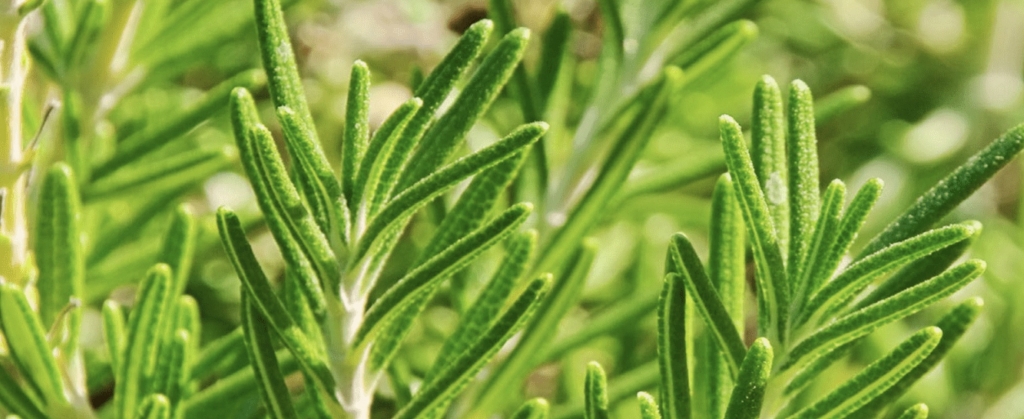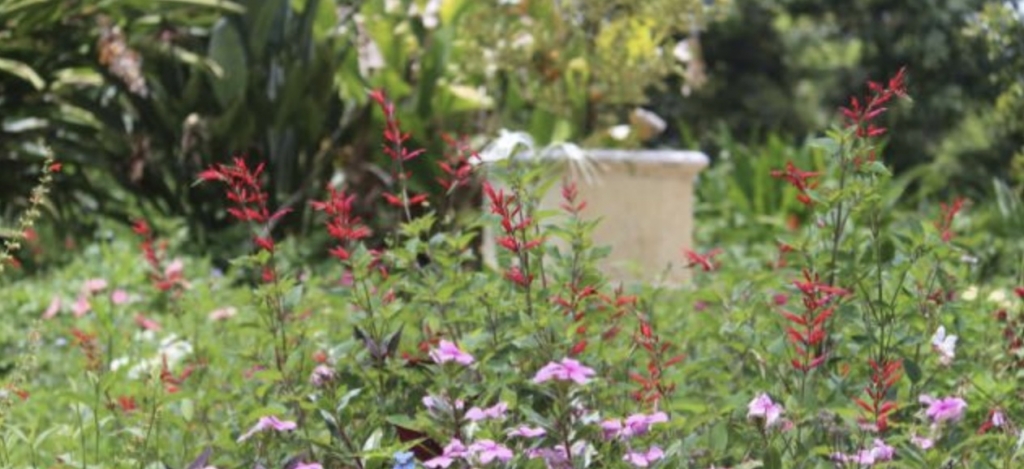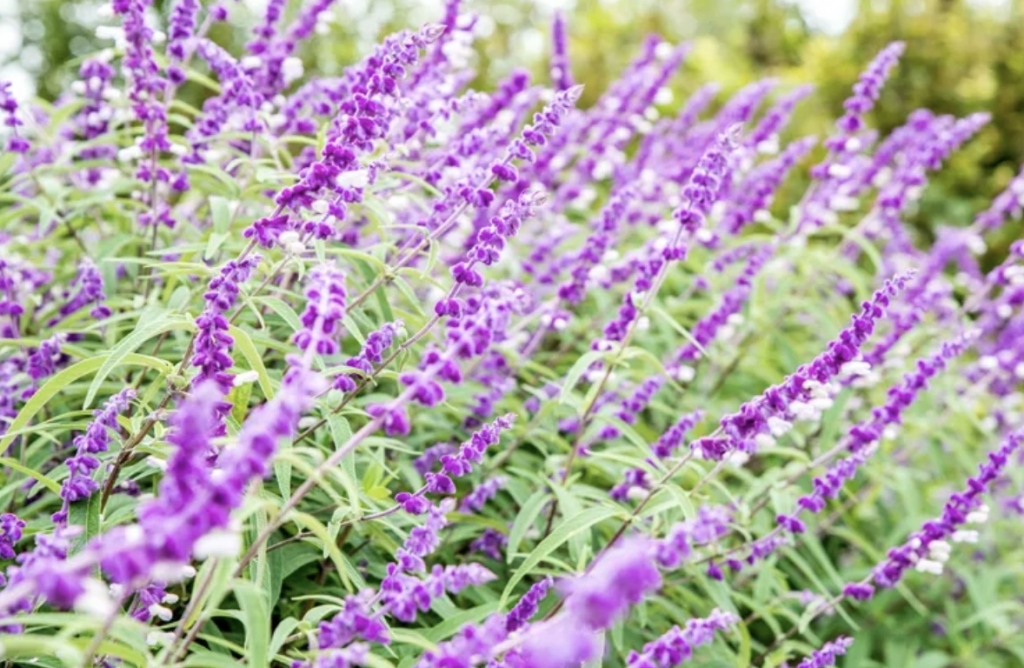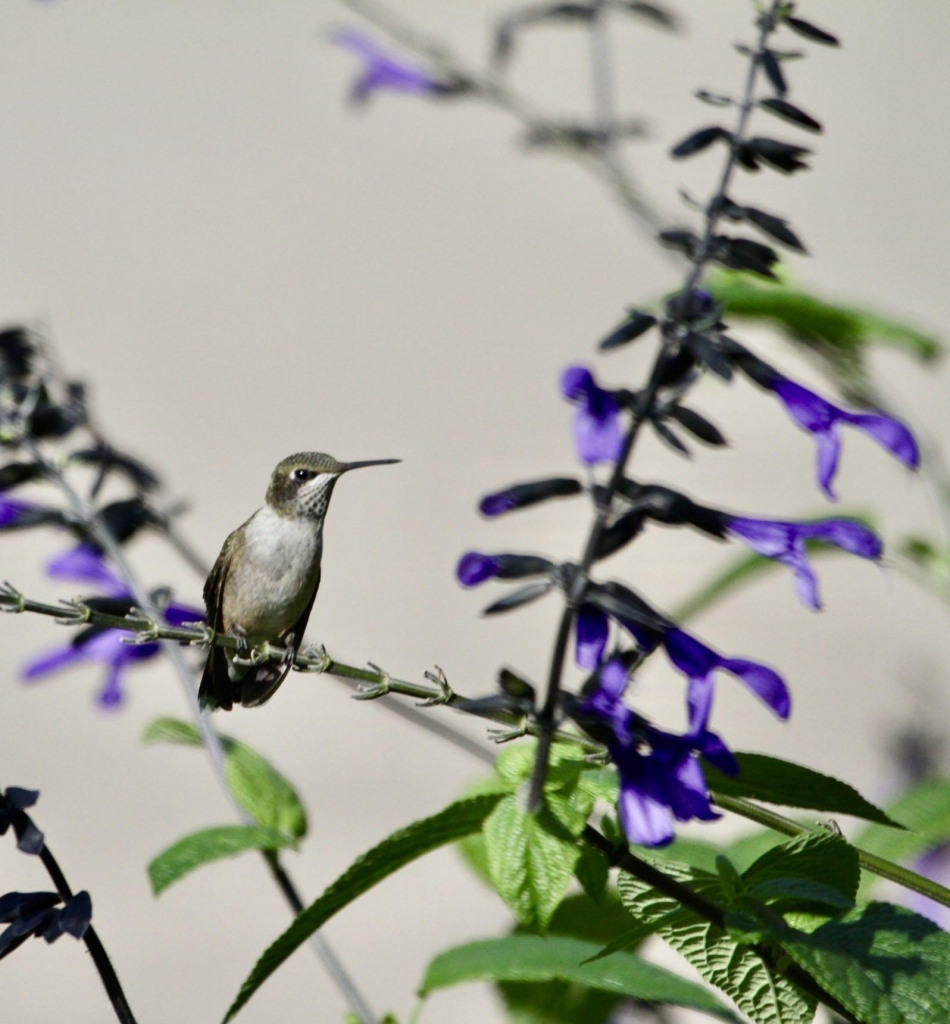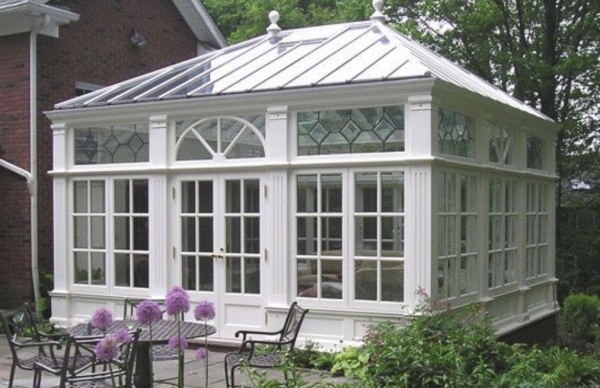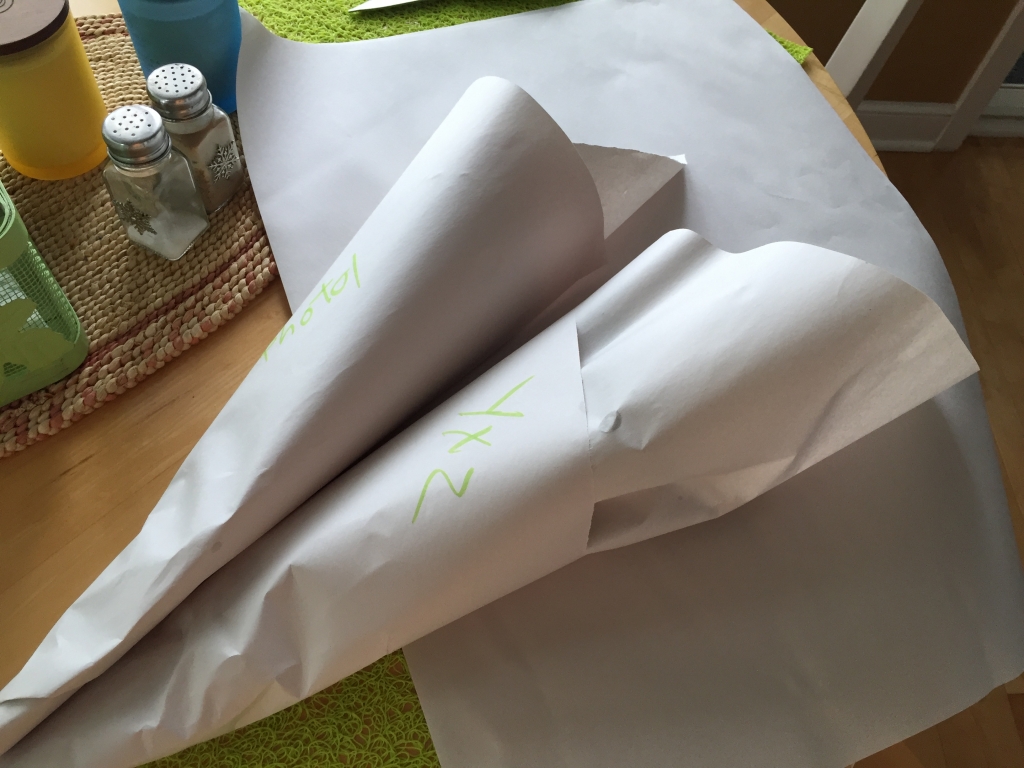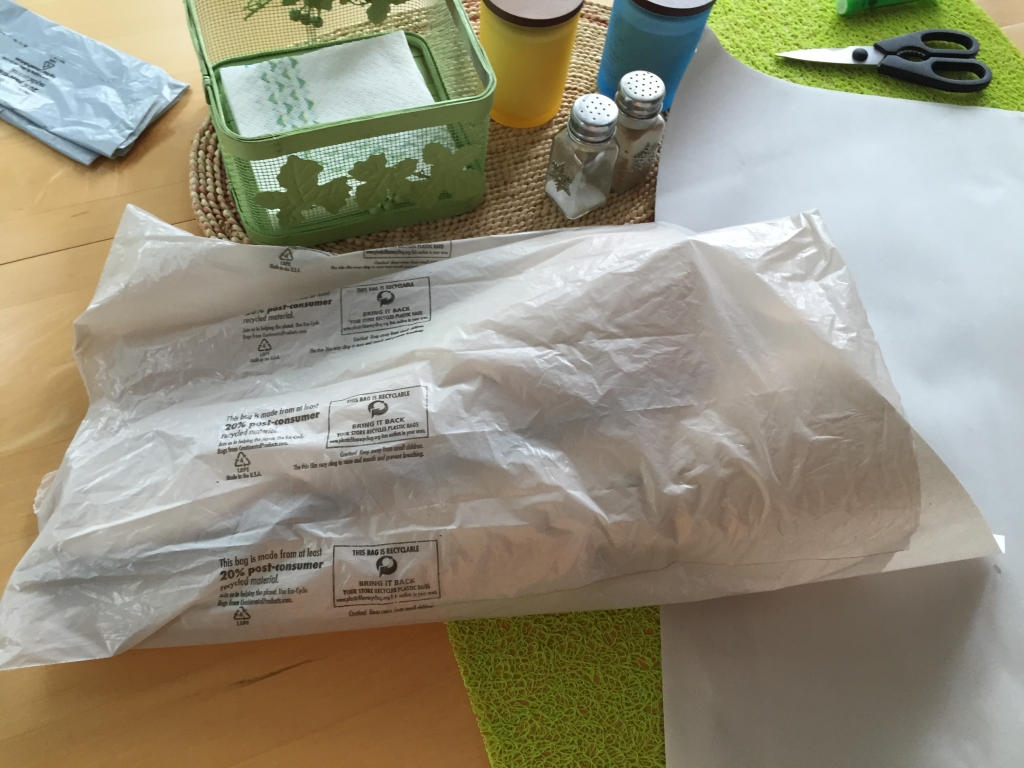July 2025 – Not Your Grandma’s Earthworm: Meet the Garden Disrupter
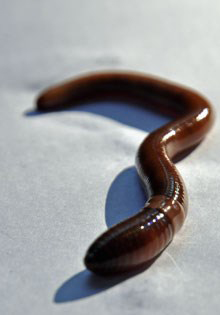 It’s getting harder and harder to be a gardener in Minnesota. Just when we figure out how to keep the deer from munching the hostas (well….a dog helps…) and the rabbits from digging up tulips (ok…we plant daffodils…), we’re swarmed by Japanese beetles. And now? Jumping worms. These aggressive invaders are rapidly spreading across the state, turning once-rich garden soil into dry, lifeless coffee grounds and leaving frustrated gardeners in their wake.
It’s getting harder and harder to be a gardener in Minnesota. Just when we figure out how to keep the deer from munching the hostas (well….a dog helps…) and the rabbits from digging up tulips (ok…we plant daffodils…), we’re swarmed by Japanese beetles. And now? Jumping worms. These aggressive invaders are rapidly spreading across the state, turning once-rich garden soil into dry, lifeless coffee grounds and leaving frustrated gardeners in their wake.
Why Jumping Worms Are a Bigger Challenge Than Other Invaders
- They Change the Soil Itself.
Unlike Japanese beetles, deer and bunnies, which feed on foliage and flowers, jumping worms fundamentally alter soil structure. They rapidly consume leaf litter and organic matter, leaving behind dry, granular soil that repels water and lacks nutrients. This disrupts microbial life and root development, affecting entire plant communities—especially woodland gardens and shade borders. - They’re Stealthy Spreaders.
Our other invaders are easy to spot. Jumping worms, on the other hand, spread via nearly invisible cocoons—about the size of poppy seeds—hidden in mulch, compost, or plant roots. You might not know they’re present until the soil becomes spongy and lifeless. - They’re Newer and Less Understood.
Deer and rabbits have been around for ever. And Japanese beetles have been in the U.S. for over 100 years; researchers and gardeners have developed a range of control tools. Jumping worms are still being studied, and no consistent management method exists yet—no nematodes, pheromone traps, or guaranteed treatments.
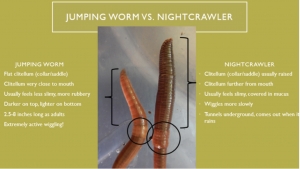 How Do I Know if I Have Jumping Worms:
How Do I Know if I Have Jumping Worms:
The most obvious sign of jumping worms isn’t the worms themselves—it’s the soil. Infested soil looks like dry, loose coffee grounds or Grape-Nuts cereal. That’s because jumping worms consume organic matter at a rapid pace, leaving behind granular castings that no longer hold moisture or nutrients well. You might notice your mulch or compost disappearing unusually fast. If you dig into the top few inches of soil and find smooth, thrashing worms with a white, milky band close to their head (the clitellum), you likely have jumping worms. These worms are most active from midsummer to fall, and they’re usually found in the upper layers of soil, leaf litter, or mulch. The picture here helps in distinguishing a jumping worm from a nightcrawler.
What To Do If You Find Jumping Worms
- Don’t Panic—but Act Quickly.
Jumping worms can’t be eliminated, but steps can slow their impact and spread. - Stop Moving Soil, Plants, or Mulch.
Avoid sharing plants or compost, and don’t move soil from infected areas. Even a teaspoon can spread cocoons. - Remove Adults (When Found).
In summer and fall, hand-pick adult worms (they’re surface dwellers), bag them, freeze them for a few days, and dispose of them in the trash. - Disturb the Soil Less.
These worms thrive in disturbed soils. Minimal tilling may reduce their appeal and activity. - Apply Mustard Water to Survey Populations.
Mix 1/3 cup of ground mustard seed with a gallon of water and pour it over a small area. Worms will surface in minutes—this helps assess infestations. - Try Solarizing Soil (Small-Scale Only).
Cover infested soil with clear plastic in summer to heat the area and potentially kill cocoons. Best for garden beds, not lawns. - Report Sightings.
Submit findings to EDDMapS or the UMN Extension Jumping Worm Report to aid research and mapping. - Stay Informed.
Visit UMN Extension’s Jumping Worm Resource for updates on research, trials, and prevention.
The University of Minnesota is studying their spread and impact, and gardeners can help by avoiding plant swaps, inspecting mulch and compost, and reporting sightings at EDDMapS.org. Learn more at UMN Extension’s “Invasive Earthworm” page—and be part of the fight beneath our feet.
https://extension.umn.edu/identify-invasive-species/jumping-worms
So, Can We Learn to Live With Them?
Yes—but it will take a shift in gardening habits and ongoing community awareness:
- Gardeners may move toward no-till practices.
- Sharing plants and compost will require more caution.
- Soil health monitoring may become part of routine care.
- Destroying worms you find may help to slow and/or disrupt the reproduction cycle of these worms. A worm only lives for one season. They grow quickly and spend all of their adult energy in reproduction mode.
It’s not hopeless, but the adjustment may be more fundamental than what we faced with Japanese beetles.
To Help with Your Fight
The University of Minnesota is studying the spread and impact of jumping worms, and gardeners can help by avoiding plant swaps, inspecting mulch and compost, and reporting sightings at EDDMapS.org. Learn more at UMN Extension’s “Invasive Earthworm” page—and be part of the fight beneath our feet.
https://extension.umn.edu/identify-invasive-species/jumping-worms
June 2025 – Cold-Hardy, Beautifully Fragrant: A New Frontier in Plant Breeding
 Can a shrub survive a Minnesota winter and perfume the garden in spring? Thanks to groundbreaking research at the University of Minnesota, the answer is increasingly yes. From roses that resist deep freezes to lilies that bloom without overwhelming fragrance, U of M plant breeders are reimagining how scent fits into northern gardens. This work even extends to grapes—creating aromatic wines grown right here in the coldest zones. Explore how science is shaping the future of fragrance in hardy plants—and why scent now plays a starring role in cold-climate breeding.
Can a shrub survive a Minnesota winter and perfume the garden in spring? Thanks to groundbreaking research at the University of Minnesota, the answer is increasingly yes. From roses that resist deep freezes to lilies that bloom without overwhelming fragrance, U of M plant breeders are reimagining how scent fits into northern gardens. This work even extends to grapes—creating aromatic wines grown right here in the coldest zones. Explore how science is shaping the future of fragrance in hardy plants—and why scent now plays a starring role in cold-climate breeding.
Lilies Without the Perfume: A Scentless Revolution
Oriental lilies are garden showstoppers, known for their bold colors and intense fragrance. But not everyone enjoys their powerful scent—for some, it’s overpowering or even triggers allergies. That’s why the University of Minnesota launched a breeding effort to develop lilies with reduced or eliminated fragrance. These varieties retain the lush, exotic appearance of traditional lilies but without the strong perfume. This work not only addresses consumer demand but also opens new markets in indoor floral design and public settings like hospitals, where strong fragrances are often avoided.
__________________________________________________________
Hardy and Heavenly: Fragrant Shrubs for Cold Climates
Gardeners in northern regions know the struggle of finding shrubs that are both fragrant and winter-hardy. Most intensely fragrant shrubs, such as traditional southern azaleas or Asian wisteria, aren’t bred for USDA Zone 4 or 5. The U of M’s Woody Landscape Plant Breeding Program is working to change that.
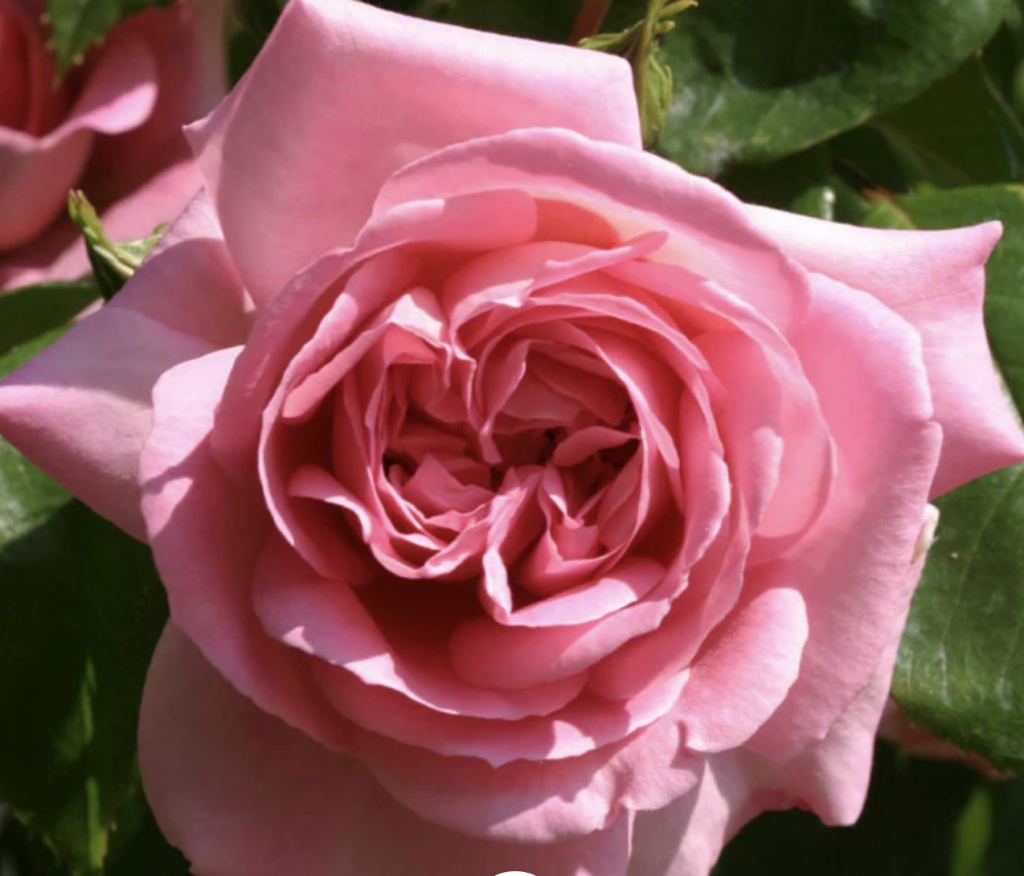 One standout example is the ‘Viking Queen’ rose, released in 1963. This climber is both cold-hardy and richly fragrant—a rare combination. Other projects focus on native azaleas like Rhododendron prinophyllum, which brings a naturally clove-scented flower to the breeding mix.
One standout example is the ‘Viking Queen’ rose, released in 1963. This climber is both cold-hardy and richly fragrant—a rare combination. Other projects focus on native azaleas like Rhododendron prinophyllum, which brings a naturally clove-scented flower to the breeding mix.
Challenges of Fragrance Breeding in Shrubs:
- Linked Traits: Many fragrance genes are tied to traits like early bloom or thin stems, which can reduce cold hardiness.
- Fragrance Complexity: Measuring scent is difficult. It requires chemical analysis or sensory panels and can vary with weather.
- Multifunctional Plants: Northern shrubs must do more than smell nice. They need to resist snow load, disease, and deer, and flower reliably in a short growing season.
Despite these challenges, the U of M continues to seek out and combine the best of both worlds: toughness and fragrance.
_____________________________________________________________________
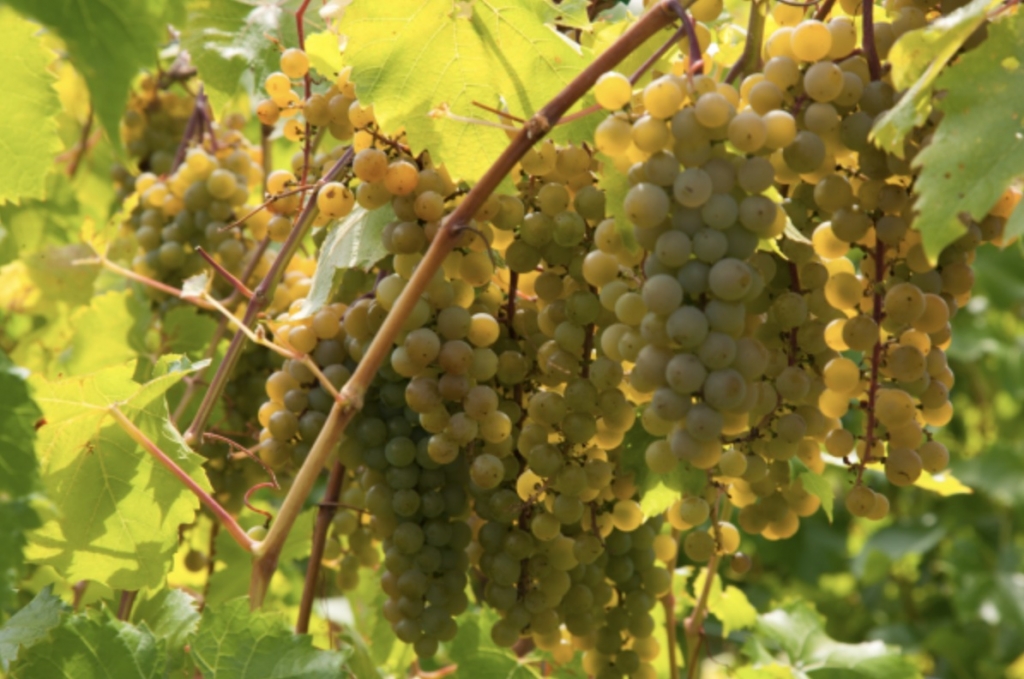 Aroma You Can Sip: The Fragrant Grapes of Minnesota
Aroma You Can Sip: The Fragrant Grapes of Minnesota
Fragrance in plants isn’t just for show—in wine grapes, it defines flavor. The U of M’s fruit breeding program has made waves with cold-climate grape cultivars that not only survive northern winters but also produce beautifully aromatic wines.
One example is ‘La Crescent’, a white grape variety prized for its floral and fruity aroma, including notes of apricot, citrus, and pineapple. Its fragrance elevates the wines it produces and helps establish a unique northern terroir.
Fragrance Meets Function
The University of Minnesota’s work shows us that scent is no longer an afterthought in northern plant breeding. Whether you’re looking for a rose that won’t freeze back, a lily that won’t overpower the senses, or a grape that makes a wine worth swirling, fragrance is increasingly part of the equation.
As gardeners and educators, we can look forward to a future where our landscapes smell just as wonderful as they look—no matter how far the thermometer falls.
May 2025 – Flourishing Friendships: The Art of Companion Planting
Companion planting is the idea that certain plants can thrive together because they provide mutual benefits, such as deterring pests, improving soil health, or encouraging growth. April is the perfect time to think about how your garden can benefit from these relationships.
Benefits of Companion Planting:
- Pest Control: Certain plants, like marigolds, can help repel pests like aphids and nematodes, keeping your garden healthier.
- Enhanced Growth: Beans fix nitrogen in the soil, which helps nearby plants like corn and tomatoes grow more robustly.
- Flavor Boost: Some plant combinations can improve the flavor of vegetables. For example, basil and tomatoes make a great pair in the kitchen and in the garden.
Popular Companion Planting Combos in the Vegetable Garden:
- Tomatoes and Basil: Basil not only enhances the flavor of tomatoes, but it also helps repel pests like mosquitoes and flies.
- Carrots and Onions: These two plants can grow together without competing for resources. The onion scent helps deter carrot flies.
- Beans and Corn: Beans climb up corn stalks, providing support, while beans fix nitrogen in the soil, enriching the soil for the corn.
Great Companion Plant Pairings for Ornamental Gardens:
Companion planting isn’t just for vegetable gardens—there are plenty of wonderful plant combinations that work well in ornamental gardens, too! Pairing plants that complement each other in terms of color, texture, growth habits, and seasonal interest can create a stunning and harmonious garden design. Here are some great companion plant pairings for ornamental gardens:
Roses and Lavender
- Lavender is a fantastic companion for roses as it helps repel pests like aphids, which are common in rose gardens. Lavender also attracts pollinators like bees, which benefit the roses, as well.
- Lavender’s gray-green foliage contrasts beautifully with the deep greens and vibrant colors of roses, and its fragrant flowers enhance the sensory experience of the garden.
- Planting lavender around the base of rose bushes, it can help improve air circulation while providing a lovely scent. It’s also drought-tolerant, which makes it a low-maintenance companion for roses.
Daylilies and Black-eyed Susans
- Daylilies and black-eyed Susans (Rudbeckia) are both hardy, low-maintenance plants that pair well together in sunny, well-drained areas.
- The bold, bright flowers of black-eyed Susans complement the varied colors of daylilies, creating a dynamic display in summer. The strappy leaves of daylilies provide a nice contrast to the rounded, dark foliage of the black-eyed Susan.
Coral Bells (Heuchera) and Hostas
- Coral Bells (Heuchera) and hostas make a wonderful shade garden pairing because they both thrive in similar conditions, such as partial to full shade and moist, well-drained soil.
- Coral bells provide beautiful foliage in shades of red, purple, or silver, which contrasts beautifully with the large, often variegated leaves of hostas. The combination of textures (bold, smooth leaves from the hostas and the delicate, ruffled leaves of Heuchera) creates visual interest.
- These plants also complement each other in terms of size. Coral Bells are typically smaller, with a neat mound of foliage, while Hostas grow in large, full clusters. Together, they form a balanced, lush ground cover for shady areas.
Peonies and Alliums
- Peonies and alliums are a fantastic pairing because of their contrasting flower shapes, heights, and blooming seasons. Peonies bloom in late spring to early summer with large, showy flowers, while alliums (like ornamental onions) bloom in early to mid-summer with striking globe-like flower heads.
- Alliums’ spherical flowers rise above the peony foliage, creating a dramatic vertical contrast. Both plants are relatively low-maintenance and tolerate full sun.
- Planting peonies in the front of the bed and alliums behind them creates a layered look. The dramatic height of the alliums creates visual interest and enhances the peony display.
Ferns and Astilbes
- Ferns and astilbes make a fantastic pairing for a cool, moist, shaded garden spot. Astilbes produce feathery, plume-like flowers in shades of pink, red, white, or purple, while ferns have elegant, finely-textured foliage.
- The contrasting textures of feathery astilbe flowers and the soft, lacy fern fronds create a peaceful, woodland-style aesthetic.
- Combining these two in a shady, moist spot creates a soothing, lush look. Astilbes provide a pop of color, while ferns fill in the background with soft, green foliage.
Echinacea (Coneflower) and Salvia
- Echinacea (Coneflower) and Salvia both thrive in full sun and are drought-tolerant, making them excellent companions in a garden that experiences dry conditions. The upright, daisy-like flowers of Echinacea contrast beautifully with the spiky, tubular flowers of Salvia.
- Both plants attract pollinators, like bees and butterflies, making this a beneficial pairing for your garden ecosystem.
- Echinacea blooms in a range of colors from pink to purple, while Salvia comes in shades of blue, purple, and red. The contrasting colors and shapes help create a vibrant, textured garden display.
Japanese Maple (Zone 5)/Korean Maple (Zone 4) and Hostas
- Japanese maples are stunning ornamental trees with delicate, finely-cut leaves in shades of red, orange, and green. Hostas, with their lush, bold foliage, make the perfect groundcover beneath a Japanese maple, providing a lovely contrast in texture.
- The shade provided by the Japanese maple allows hostas to thrive, and the subtle colors of the hostas provide a beautiful backdrop for the tree’s striking foliage.
- This combination works especially well in a shaded or woodland-style garden. The Japanese maple offers seasonal interest with its changing foliage, while hostas offer a steady presence with their foliage throughout the year.
Lavender and Lemon Balm
- Lavender and lemon balm are both fragrant herbs, and when planted together, they create a wonderful sensory experience in your garden. Lemon balm, with its bright green leaves and lemony fragrance, pairs beautifully with the deep purple flowers and silver-green foliage of lavender.
- Both plants thrive in full sun and well-drained soil, making them low-maintenance and perfect for garden borders or herb gardens.
- The combination of lavender and lemon balm works wonderfully in sensory or relaxation-themed gardens.
Lemon balm can sometimes be invasive, so plant it in containers or in a designated area where it can spread without overtaking other plants.
Black Mondo Grass and Ornamental Grasses
- Black Mondo Grass (Ophiopogon planiscapus – Zone 5) offers dark, almost black foliage that contrasts beautifully with other ornamental grasses. This grass can be paired with lighter-colored ornamental grasses like Pennisetum (Fountain Grass) or Blue Fescue for a striking contrast in both color and texture.
- The bold, spiky form of the grasses contrasts well with the softer, more arching leaves of the mondo grass.
- Both grasses thrive in full sun to partial shade and are very drought-tolerant, making them great low-maintenance companions for your ornamental garden.
These are just a few examples of plant pairings that work beautifully together in ornamental gardens. By combining plants that complement each other in terms of color, size, texture, and bloom time, you can create a garden that’s not only visually appealing but also functional and low-maintenance. Try experimenting with different combinations to see what works best in your space!
April 2025 – Gardening Myths – Fact or Fiction?
Everyone loves a good gardening myth, but how many are actually true? Let’s dig into some of the most popular garden myths and see if they hold up or if they’ve been debunked.
Myth: Coffee grounds are great for all plants.
✅ True (for some plants). Coffee grounds are rich in nitrogen, but they’re not a one-size-fits-all solution. Some plants, like acid-loving ones (azaleas, hydrangeas, blueberries), benefit from them, but others may not appreciate the extra acidity (lilacs, hosta, clematis).
Myth: Too much compost can poison your garden
✅ True – but….. While compost is an excellent way to improve soil structure, provide nutrients, and increase microbial activity, excess compost can lead to a few problems:
Nutrient Imbalance: Compost contains a variety of nutrients, but if used in excess, it can create an imbalance in the soil, potentially leading to too much nitrogen or other nutrients. This could harm plants by promoting excessive foliage growth at the expense of flowers or fruit, or it might cause nutrient toxicity, affecting plant health.
- Soil Compaction: Adding too much compost can alter the soil structure. It can cause the soil to become too dense and heavy, particularly if the compost is not well-decomposed. This can limit root growth and water drainage, leading to poor plant development and waterlogging.
- Decreased Oxygen Levels: Over time, a thick layer of compost can limit the amount of oxygen that reaches plant roots, which is essential for healthy root growth. Lack of oxygen can lead to root rot or other problems in plant health.
- Soil pH Changes: Compost can sometimes alter the pH of the soil, depending on the ingredients used. Overapplying compost may make the soil too acidic or alkaline, which can affect the ability of plants to absorb nutrients.
- Weed Growth: If the compost isn’t well-screened or contains weed seeds, applying large amounts of compost could lead to an increase in weed growth in your garden, as the added organic matter provides an ideal environment for weed seeds to germinate.
How to use compost appropriately - Layering: It’s best to mix compost into the soil rather than just piling it on top. A 2- to 3-inch layer is usually enough for most plants.
- Balance: Try to balance the compost with other organic amendments to prevent an overload of any one nutrient.
- Use Well-Decomposed Compost: Make sure the compost is well-decomposed to avoid adding undecomposed material that can rob the soil of nitrogen as it breaks down.
- Monitor pH: Regularly check your soil’s pH to ensure it stays within the optimal range for your plants.
When used appropriately, compost is an invaluable resource for enriching your soil, but moderation and proper application are key.
Myth: Forests remove Carbon from the air
✅ True – but….. Trees absorb CO2, storing carbon in their wood while alive. When they die, decay begins, with microorganisms digesting the wood and temporarily storing carbon. These microbes are then consumed by arthropods, worms, and higher animals, which respire carbon as CO2. This natural cycle releases stored carbon back into the atmosphere. In a mature forest, tree growth reaches a steady state—new trees only replace dying ones, preventing further net carbon absorption. Since the forest’s biomass remains constant, it cannot continuously absorb more carbon each year, limiting its role as a long-term carbon sink.
With that said, trees are invaluable assets in our gardens, offering beauty, shade, and environmental benefits. They can cool surrounding air by up to 15 degrees, making them essential in our warming climate. Their roots help prevent erosion and manage stormwater, reducing flooding. Trees also provide crucial habitat and food for birds, insects, and other wildlife, supporting biodiversity. Beyond their ecological role, they add structure, seasonal interest, and a sense of permanence to the landscape. While trees eventually release stored carbon, their many benefits—cooling, shelter, and ecosystem support—make them a vital part of any sustainable garden.
Myth: Talking to plants helps them grow.
✅ True (kind of). While plants don’t have ears, studies suggest that vibrations (like those from voices or music) can stimulate growth. While it’s not scientifically proven that plants respond to voices, studies suggest that the vibration from sound waves may help stimulate growth. But it’s still unclear how much “chatting” with your plants actually helps.
Myth: Adding sugar to soil makes tomatoes sweeter.
❌ False. Tomato sweetness comes from genetics and proper care, not added sugar.
Myth: Marigolds repel pests in the garden.
✅ Partially true While marigolds can deter some nematodes and insects…and some say bunjies… they’re not a universal pest repellent.
Myth: Rusty nails in soil make hydrangeas blue.
❌ False. Hydrangea color depends on soil pH, not rust. To make them blue, lower the soil pH with aluminum sulfate.
Myth: Beer traps are the best way to get rid of slugs.
✅ Partially true. Beer traps can attract and drown slugs, but they aren’t the most effective long-term solution.
Myth: You can’t plant tomatoes until after the last frost.
✅ True (kind of). While it’s true that frost can damage tender plants, some varieties of tomatoes can actually tolerate a light frost. It’s more about the right soil temperature than just waiting for the last frost!
Myth: Planting by the moon phases improves growth.
❌ Debatable. While there’s no scientific proof for this, but some gardeners swear by it as part of biodynamic gardening .
Biodynamic gardening is a holistic, sustainable farming and gardening method that goes beyond organic practices by incorporating spiritual and cosmic principles. It was developed by philosopher Rudolf Steiner in the early 20th century and emphasizes the connection between the soil, plants, animals, and the broader cosmos.
Key principles of biodynamic gardening include:
- Soil Health: Like organic gardening, biodynamic gardening focuses on improving soil health through composting, crop rotation, and avoiding synthetic chemicals.
- Cosmic Rhythms: Biodynamic gardeners plant and harvest based on lunar cycles and astrological influences. They believe that the phases of the moon, as well as planetary positions, impact plant growth.
- Biodynamic Preparations: Special compost preparations (made from herbs, manure, and minerals) are used to enhance soil fertility and plant growth. These preparations are said to enrich the soil and improve plant vitality.
- Integrated Ecosystem: Biodynamic gardens aim to be self-sustaining, with a balance of plants, animals, and insects that work together. This includes practices like using animals for natural pest control and creating habitats for beneficial creatures.
In essence, biodynamic gardening is a highly integrated and spiritually-driven approach to gardening that fosters a deep connection to the earth and its rhythms.
November 2024 – Winter Wellness: Why Now is the Time for Indoor Gardening
As our understanding of the specific benefits of indoor plants evolves, the idea of cultivating an indoor garden is increasingly seen as not just an aesthetic choice but a vital component of a healthy living space. This growing body of research reinforces the importance of incorporating plants into our homes and workplaces for both environmental and psychological benefits.
Back in the late ’80s, NASA was looking for ways to detoxify the air in its space stations. So it conducted a study to determine the most effective plants for filtering the air of toxic agents and converting carbon dioxide to oxygen.
In 1989, their results were published in the Clean Air Study that provided a definitive list of the plants that are most effective at cleaning indoor air. The report also suggested having at least one plant per every hundred square feet of home or office space.
NASA’s List
- Dwarf Date Palm
- Boston Fern
- Kimberly Queen Fern
- Chlorophytum comosum – Spider Plant
- Aglaonema – Chinese Evergreen
- Bamboo Palm
- Ficus benjamina – Weeping Fig
- Pothos – Devil’s Ivy
- Anthurium – Flamingo Lily
- Liriope – Lilyturf
- Broadleaf Lady Palm
- Gerbera jamesonii – Barberton/Gerbera Daisy
- Dracaena fragrans – Cornstalk Dracaena
- Hedera helix) – English Ivy
- Sansevieria – Variegated Snake Plant
- Dracaena marginata – Red-edged Dracaena
- Spathiphyllum – Peace Lily
- Florist’s Chrysanthemum
I’m sure you recognize many of these old standbys…at nurseries today you can find all kinds of new cultivars in interesting new shapes, sizes and colors.
Please note: Some of these plants may be toxic for your pets, so please do your research to ensure your furry friends stay safe.
What’s in our air?
Recent research has delved deeper into the ability of indoor plants to remove specific pollutants, enhancing their role in improving indoor air quality and overall health. While NASA’s initial study highlighted general air purification capabilities, newer studies focus on particular volatile organic compounds (VOCs) commonly found in household products and furnishings.
- Trichloroethylene – Found in printing inks, paints, lacquers, varnishes, adhesives, and paint removers. Symptoms associated with short-term exposure include: excitement, dizziness, headache, nausea, and vomiting followed by drowsiness and coma.
- Formaldehyde – Found in paper bags, waxed papers, facial tissues, paper towels, plywood paneling, and synthetic fabrics. Symptoms associated with short-term exposure include: irritation to nose, mouth and throat, and in severe cases, swelling of the larynx and lungs.Spider plant and Boston fern were found to effectively absorb formaldehyde.
- Benzene – Used to make plastics, resins, lubricants, detergents, and drugs. Also found in tobacco smoke, glue, and furniture wax. Symptoms associated with short-term exposure include: irritation to eyes, drowsiness, dizziness, headache, increase in heart rate, headaches, confusion and in some cases can result in unconsciousness.
Recent findings indicate that plants like the spider plant and Boston fern effectively absorb formaldehyde, while pothos and peace lilies excel at removing benzene
- Xylene – Found in rubber, leather, tobacco smoke, and vehicle exhaust. Symptoms associated with short-term exposure include: irritation to mouth and throat, dizziness, headache, confusion, heart problems, liver and kidney damage and coma.
- Ammonia – Found in window cleaners, floor waxes, smelling salts, and fertilizers. Symptoms associated with short-term exposure include: eye irritation, coughing, sore throat.
Research shows
- For instance, recent findings indicate that,
- Additionally, many indoor plants improve air quality by filtering toxins and increasing humidity, which can help alleviate dry skin and respiratory discomfort during colder months.
- Spending time with plants can significantly boost your mood and reduce stress. Studies show that nurturing greenery can lower cortisol levels, promoting relaxation and well-being.
- Indoor gardening can also spark creativity and provide a sense of accomplishment as you watch your plants thrive.
- Whether you’re cultivating herbs for cooking or nurturing beautiful flowers, tending to plants encourages mindfulness and connection to nature, combating feelings of isolation that winter can bring.
- Moreover, researchers are investigating the mechanisms behind these processes, revealing how plant roots and microbial communities in the soil contribute to toxin breakdown.
- Beyond air purification, studies show that indoor plants can significantly improve mental health by reducing stress and enhancing mood. Interactions with greenery have been linked to lower cortisol levels and increased feelings of relaxation and well-being.
Start small AND easy—consider adding a few low-maintenance plants like snake plants or pothos to your home. As you engage with your indoor garden, you’ll find not only a healthier environment but also a soothing and fulfilling winter activity. Embrace the joy of indoor gardening this season and experience the numerous ways plants can enhance your health and happiness!
October 2024 – Petals and Pixels: The Art of Horticulture
To prepare your garden plants for photography, start by choosing the right time—early morning or late afternoon offers the best natural light. Clean up any debris around the plants, removing wilted leaves and weeds to create a tidy backdrop. Prune any overgrown branches for a neater appearance. Consider using props like decorative pots or garden tools to add interest. Ensure your plants are well-watered and healthy; vibrant colors will pop in photos. Lastly, experiment with different angles and compositions, focusing on unique details. With a little preparation, your garden can become a stunning visual story ready to be captured!
September 2024 – Fall into Bloom: Planting Spring Bulbs
Planting spring-flowering bulbs in the fall can lead to a spectacular spring garden. Here are best practices to ensure success:
- Timing: Plant bulbs 6-8 weeks before the first expected frost. This allows time for roots to establish before the ground freezes….the time is now…
- Soil Preparation: Choose well-drained soil. Amend heavy or clay soils with organic matter to improve drainage and prevent bulb rot.
- Planting Depth: Plant bulbs at a depth approximately three times their height. For example, a 2-inch tall bulb should be planted about 6 inches deep.
- Spacing: Space bulbs according to their type. Generally, plant them about 2-4 inches apart to avoid overcrowding. You can plant multiple bulbs in one hole for a bolder mass of color.
- Orientation: Place bulbs with the pointed end facing up. For bulbs like tulips and daffodils, this helps them grow properly.
- Watering: Water the area thoroughly after planting to help settle the soil and initiate root growth. Ensure bulbs are not sitting in waterlogged soil.
- Mulching: Apply a layer of mulch (2-4 inches) over the planting area. This helps insulate the soil, retain moisture, and suppress weeds.
- Protection: Our winters can be harsh, consider using additional mulch or a protective cover to prevent soil from freezing too early.
- Labeling: Label your plantings to keep track of different varieties and their bloom times, which helps with garden planning.
- Post-Planting Care: After planting, keep an eye on the area and water as needed if rainfall is insufficient. Avoid disturbing the soil until spring.
Following these practices will help ensure a vibrant and colorful display of spring blooms.
August 2024 – Slug Off: The Garden’s No-Slither Zone
The slugs have been wreaking havoc on many plants especially on Hosta. To manage slugs, Here are some suggestions that may help keep them t bay. While trying to maintain dry, well-drained soil can be challenging, but this really helps. But….this is not always possible when you have a rainy summer. Here are a few things to try and the pros and cons of each method.
Copper Tape
How It Works:
-
- Electrostatic Repulsion: Slugs and snails are repelled by copper because it creates a reaction that gives them a mild electric shock when they come into contact with it. The copper tape disrupts their ability to move across it.
- Barrier Method: Copper tape is placed around plants or garden beds to create a physical barrier that slugs will avoid crossing.
Effectiveness:
-
- Highly Effective: Copper tape can be very effective in preventing slugs from reaching plants if installed correctly. However, its effectiveness may decrease over time if it becomes dirty or corroded.
Eggshells
How It Works:
-
- Physical Barrier: Crushed eggshells create a rough, sharp surface that slugs find uncomfortable to cross. The texture irritates their soft undersides.
- Natural Deterrent: Eggshells also decompose into calcium, which can enrich the soil.
Effectiveness:
-
- Moderately Effective: Eggshells can deter slugs but may not be as effective as copper tape. They need to be replenished regularly, especially after rain, as they can break down or be washed away.
Other Methods
- Beer Traps:
- How It Works: Slugs are attracted to the yeast in beer, which lures them into shallow containers where they drown.
- Effectiveness: Effective for attracting and trapping slugs, though it may need to be replaced frequently.
- Diatomaceous Earth:
- How It Works: This powdery substance is abrasive to slugs and causes dehydration when they crawl over it.
- Effectiveness: Highly effective when kept dry. It needs to be reapplied after rain.
- Hand Picking:
- How It Works: Regularly searching for and removing slugs by hand.
- Effectiveness: Effective in small gardens or for targeted control but labor-intensive.
- Nematodes:
- How It Works: Beneficial nematodes are microscopic worms that parasitize and kill slugs.
- Effectiveness: Can be very effective but requires proper soil conditions and application.
- Organic Slug Baits:
- How It Works: Baits made from iron phosphate attract and kill slugs.
- Effectiveness: Generally effective and safer for pets and wildlife compared to chemical baits.
- Mulching:
- How It Works: Use materials like gravel or coarse mulch to create an inhospitable environment for slugs.
- Effectiveness: Can help reduce slug populations by making the habitat less appealing.
Using a combination of these methods can enhance slug control, as different strategies address various aspects of slug behavior and habitat.
July 2024 – Blossoms and Beasts: Nurturing Wildlife Through Horticulture
As home gardeners we can support wildlife while protecting our gardens by:
- Planting Native Species: Support local wildlife with familiar food sources and shelter.
- Providing Water: Birdbaths or shallow dishes attract birds and insects.
- Creating Shelter: Use dense shrubs or nesting boxes for habitats.
- Avoiding Chemicals: Opt for natural pest control methods like companion planting.
- Mulching Mindfully: Provide cover and conserve soil moisture responsibly.
- Leaving Wild Areas: Allow patches of natural growth for wildlife refuge.
- Limiting Night Lighting: Reduce disturbance to nocturnal animals and insects.
- Educating Yourself: Learn about local wildlife and their needs.
- Monitoring Health: Regularly assess plant and wildlife interactions for balance.
- Sharing Knowledge: Encourage neighbors to join in wildlife-friendly practices.
Deterring Unwanted Interaction
Deterring deer and rabbits proves challenging due to their adaptability, persistence, and diverse (and voracious) feeding habits. Effective strategies often require a combination of strategies to discourage wildlife behaviors.
Here is a list of strategies:
 Physical Barriers: Use fences or netting around vulnerable plants, ideally at least 6 feet tall for deer and buried several inches underground to deter rabbits. Putting netting or a chicken wire tent over planted tulip bulbs will protect the emerging sprouts for rabbit nibbling in the spring.
Physical Barriers: Use fences or netting around vulnerable plants, ideally at least 6 feet tall for deer and buried several inches underground to deter rabbits. Putting netting or a chicken wire tent over planted tulip bulbs will protect the emerging sprouts for rabbit nibbling in the spring.
Repellents: Apply commercial or homemade repellents that deter animals through scent or taste. Examples include garlic or pepper sprays for rabbits and deer, and hot pepper or predator urine sprays for squirrels. Repellents can prove frustrating in a year when we have rain every day…..
Plant Selection: Choose plants that are less appealing to these animals. Deer-resistant plants include daffodils, lavender, and yarrow. Rabbits tend to avoid herbs like rosemary and sage, while squirrels dislike plants with strong scents like marigolds or daffodils. The key here us “less appealing”….when hungry, wildlife is known to eat anything!
Scare Tactics: Use visual or auditory deterrents such as scarecrows, shiny objects like CDs or aluminum foil strips, or motion-activated sprinklers to startle and deter animals.
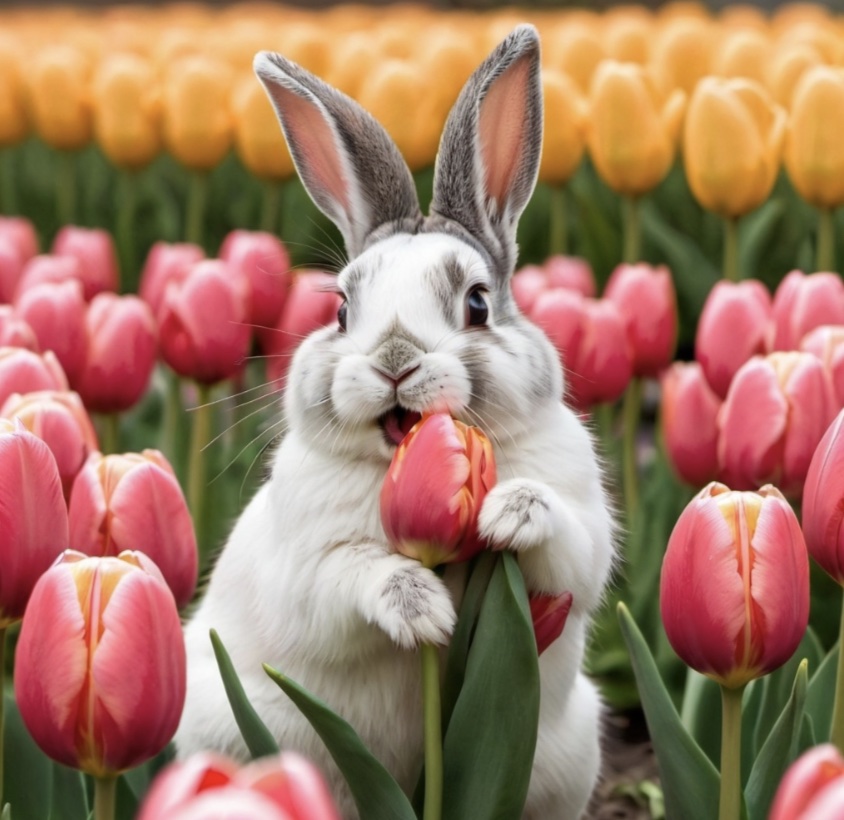
Garden Maintenance:
Keep your garden clean and tidy, removing debris and potential hiding spots for animals. Regularly prune and maintain plants to minimize hiding places. Providing a little wild spot in your yard may lure bunnies out of your garden.
Alternative Food Sources: Provide alternative food sources away from your garden to distract animals, such as feeding stations or planting sacrificial crops they prefer. Providing a feeding station is not suggested for deer….no salt licks or feeding stations for deer, PLEASE!
Companion Planting: Plant herbs or flowers that repel pests near vulnerable plants. For example, planting garlic or onions near susceptible vegetables can deter rabbits.
Change Tactics: Rotate your repellents or scare tactics regularly to prevent animals from becoming accustomed to them.
Monitor and Adjust: Regularly inspect your garden for signs of animal activity and adjust your strategies as needed based on effectiveness.
 A Secret Weapon Against Pests
A Secret Weapon Against Pests
We often dismiss the idea of snakes in our gardens, but the common garter snake can be very helpful in controlling the population of baby bunnies, squirrels, voles, mice and other small critters. To encourage them, follow the above suggestions, as well as incorporate logs, rocks, and stone walls into your garden design. These provide thermal regulation opportunities for snakes, which need warm spots for digestion. A rotted/rotting log could provide the hiding spot and shelter a garter snake may be looking for.
By implementing these best practices and encouraging neighbors to support wildlife-friendly practices, you can reduce the likelihood of deer, rabbits, and squirrels eating your plants while preserving biodiversity and maintaining a healthy and thriving garden.
June 2024 – Summer Survival Guide: June Gardening Concerns
In this critical month of June, you need to take stock in all of the things that can interfere with you maximizing the impact of your garden. Below you will find helpful hints for each of the major concerns.
- Effective water management: Effective water management is essential as we move into the longer warmer days. Here are a few things you can do to manage water resources in your garden:
- Drip irrigation: Use drip irrigation by installing a network of hoses with emitters at the base of plants. This system delivers water directly to the roots, reducing evaporation and runoff. It also helps keep water off the plant leaves. Set timers to automate watering schedules, ensuring consistent moisture levels.
- Soaker hoses: Use soaker hoses by laying them around plants, ensuring the hoses rest on the soil surface or beneath mulch. Connect the hoses to a water source and turn on the water at low pressure, allowing moisture to seep slowly and deeply into the soil.
- Mulching: Use mulch in your gardens by applying a layer of organic materials such as wood chips, straw, or compost around plants. Mulch conserves soil moisture, suppresses weeds, regulates soil temperature, and improves soil health by gradually breaking down and adding nutrients. Reapply mulch as needed to maintain effectiveness.
- Rainwater Harvesting: You can harvest rainwater by installing a rain barrel or a larger rainwater harvesting system. Position a rain barrel beneath a downspout to collect runoff from the roof. Use a screen or filter to remove debris. The collected water can be used for watering plants, reducing reliance on municipal water sources, and conserving resources. For larger systems, install gutters with downspouts directed to storage tanks. Ensure tanks are sealed to prevent contamination and mosquitoes. Use the stored rainwater for irrigation, washing outdoor items, or even for non-potable indoor uses (non-potable uses are uses other than for drinking) with appropriate filtration and treatment systems if required by local regulations
- Scheduled Watering Times: Schedule watering times by considering plant needs, soil moisture levels, and weather conditions. Water early in the morning to minimize evaporation and allow foliage to dry before evening. Use timers or smart irrigation controllers to automate watering schedules, adjusting frequency based on seasonal changes and rainfall. Appropriate watering can help make soil monitoring easier.
- Soil Moisture Monitoring: Manage soil moisture by regularly monitoring its condition through visual inspection and by using a moisture meter. They adjust watering frequency and duration based on plant requirements, weather patterns, and soil type. Mulching helps retain moisture, while proper drainage prevents waterlogging. Incorporating organic matter improves soil structure, enhancing moisture retention. Additionally, selecting drought-tolerant plants reduces the need for frequent watering. Balancing these factors ensures optimal soil moisture levels for healthy plant growth while conserving water resources. Regular observation and adjustment are key to maintaining an ideal moisture balance in the garden.
- Proper Plant Spacing: Proper spacing allows for optimal air circulation, sunlight penetration, and nutrient uptake, reducing the risk of disease and competition for resources among plants. You can manage plant spacing by considering the mature size of each plant species, ensuring they have adequate room to grow without overcrowding. Refer to planting guides or consult with local gardening experts for recommended spacing guidelines. Regularly monitoring plant growth and making adjustments as needed ensures each plant thrives without encroaching on neighboring specimens, promoting a healthy and visually appealing garden landscape. While over planting annuals can give you an earlier mass of color, perennials need to be thinned to maintain their health year after year.
- Drought-tolerant Plant Selection: to minimize waste and maximize hydration. Select drought-tolerant plants by researching species native to our region, known for their resilience in dry conditions. Prioritize plants with adaptations like succulent leaves or deep root systems, which retain water efficiently. A visit to the Landscape Arboretum, consulting with local nurseries, contacting a master gardener or the UMN extension office helps identify suitable drought-resistant varieties for your garden.
- Managing Pest Infestations and Plant Diseases: Pests and plant diseases in the garden can escalate the home gardeners stress. Pests require vigilant monitoring and prompt control measures. Manage pest infestations and plant diseases by practicing integrated pest management (IPM). Inspect plants regularly for signs of pests or disease, identifying and diagnosing issues promptly. Employing natural predators, and practicing good cultural care, like proper watering and soil maintenance, help prevent and control outbreaks. I encourage you to use all pesticides sparingly…even if they say they are organic. Additionally, vegetable crop rotation and maintaining plant diversity discourage pest buildup. Regularly cleaning tools and disposing of affected plant debris prevent the spread of pathogens. By implementing a comprehensive approach, you can effectively manage pest and disease pressures while minimizing environmental impact.As we move from zone 4b to 5a we will see more and more invasive bugs and plants. We must keep up with the research on these invasives including: emerald ash borer, Japanese beetles, garlic mustard, creeping bellflower, Dame’s rocket…and these are on top of dandelions, creeping Charlie, crown vetch and buckthorn…Yowsa!!!
- Maintaining Soil Health: Maintaining soil health is essential for a thriving garden. Firstly, avoid compaction by not walking on soil when it’s wet. Regularly add organic matter like compost to enhance fertility and structure. Rotate vegetable crops annually to prevent nutrient depletion and minimize pests and diseases. Mulch beds to retain moisture, suppress weeds, and gradually enrich the soil as it decomposes. Test soil pH and nutrient levels periodically to adjust amendments accordingly. The University of Minnesota has one of the few soil testing labs in the nation that tests soil for citizen soil testing. The practice of diverse planting encourages beneficial soil microbes and prevents soil erosion. Finally, minimize chemical usage to preserve soil biodiversity and ecosystem balance, promoting long-term sustainability for your garden and the environment.
- Weed Control: You can effectively manage weed control without chemicals through several eco-friendly methods. Regularly hand-pull weeds before they seed, ensuring to remove the roots to prevent regrowth. Mulching with organic materials like straw or wood chips suppresses weed growth by blocking sunlight. Utilize cardboard under mulch in garden beds to smother weeds while still allowing water penetration. While employing a hoe or hand cultivator to disturb weed growth disrupts their root systems, it can also create crevices in the soil that can trap blowing seeds or seeds dispersed by the birds giving them a chance to set down roots. Additionally, planting ground cover plants or dense crops can outcompete weeds for space and nutrients. These methods promote a healthier, chemical-free garden while minimizing environmental impact. As a perennial garden matures and the plants grow together, they also cerate a dense carpet that keeps weeds at bay.
- Heat Stress: Heat stress can challenge plant resilience: You can effectively manage heat stress in their garden through strategic planning and care. First, choose heat-tolerant plant varieties suitable for our region. Provide adequate water, preferably in the early morning or late evening to minimize evaporation. Mulch garden beds to retain soil moisture and regulate soil temperature. Consider shading sensitive plants with temporary structures or taller plants. Installing a drip irrigation system can be efficient for water delivery directly to the roots and for keeping the roots cool. Employ organic matter to improve soil structure and moisture retention. Finally, monitor plants closely for signs of stress and adjust watering and shading accordingly to ensure a healthy and resilient garden during hot periods.
As summer blooms, embrace the joy of nurturing your green companions. Let sunlight infuse vitality into your garden, while your tender touch fosters growth. From vibrant blooms to lush foliage, may your summer be filled with the beauty of nature’s embrace. Happy gardening, and may your green oasis flourish under the sun’s warm gaze.
May 2024 – From Zone to Zone: Gardening Strategies in Lake Minnetonka’s Shifting Climate
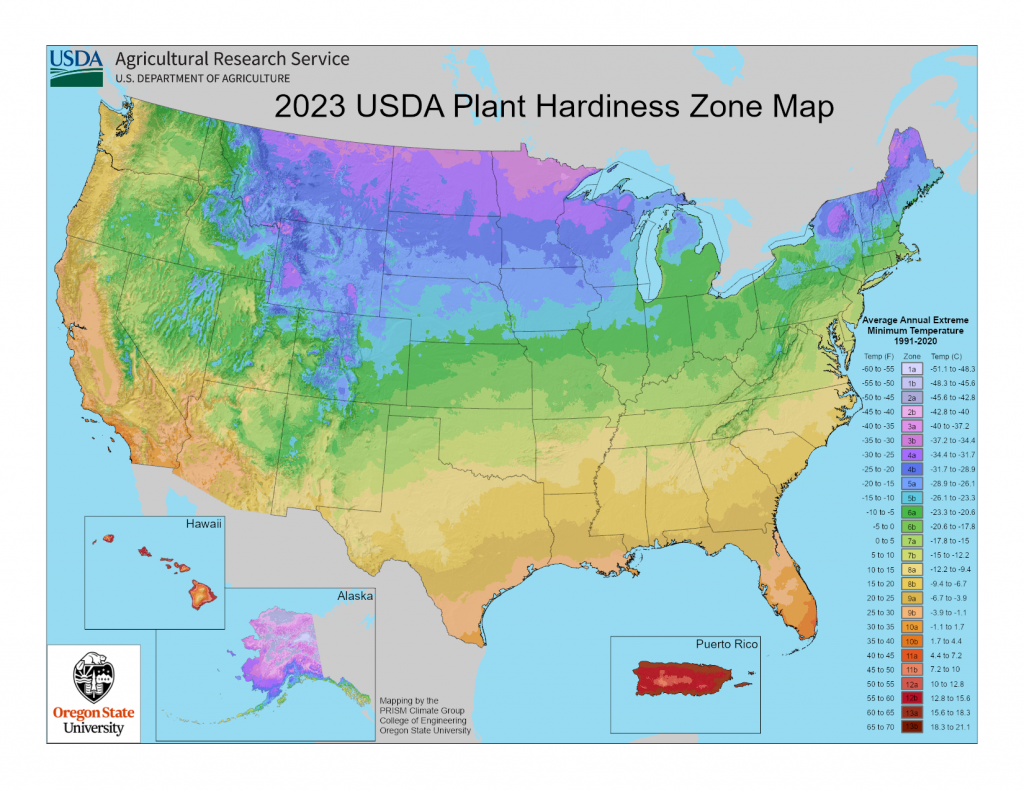 Moving from USDA hardiness zone 4b to zone 5a opens up some exciting possibilities for gardening. On the State Plant Hardiness map you can see that the Twin Cities is in a bit of a heat bubble. However, not all of our area is considered zone 5a. Your home may be located in the new zone, while your neighbor’s is not.
Moving from USDA hardiness zone 4b to zone 5a opens up some exciting possibilities for gardening. On the State Plant Hardiness map you can see that the Twin Cities is in a bit of a heat bubble. However, not all of our area is considered zone 5a. Your home may be located in the new zone, while your neighbor’s is not.
The USDA has an interactive map that allows you to enter your address or zip code and it puts you on the map to see just what they believe the hardiness is for your neighborhood: https://planthardiness.ars.usda.gov/
AND you should keep in mind that this zone change has been happening for a number of years. It isn’t suddenly perfect for the new varieties. Be thoughtful as you add new plants to your garden, testing various spots for the new cold-tolerant varieties.
With this new information, here are some changes you might consider making to take advantage of the slightly warmer climate:
- Expand Your Plant Selection: With the milder winters in zone 5, you can grow a wider variety of plants that may have struggled in zone 4. Consider adding tender perennials, such as lavender or rosemary, to your garden….maybe even a Japanese Maple.
- Grow Longer-Season Crops: The earlier warmer weather provides us with a longer growing season, so you can plant crops that require more time to mature, such as certain varieties of tomatoes, peppers, and melons.
- Experiment with New Varieties: Explore new plant varieties that are better suited to the slightly warmer temperatures of zone 5. Look for cultivars specifically bred for our new zone to maximize success.
- Adjust Planting Dates: Take advantage of the extended growing season by adjusting your planting dates accordingly. You can start planting earlier in the spring and continue later into the fall. Adjustment will also b de needed for feeding our feathered and furry friends.
- Reassess Frost Dates: With a shift in hardiness zone, our average last frost date may change. Be sure to check updated frost dates for our new zone and plan your garden activities accordingly.
- Mulch for Moisture Conservation: Our summers seem to be getting warmer and drier than they used to be. Mulching becomes even more critical for conserving moisture in the soil. Consider using organic mulches like straw or shredded leaves.
- Adjust Watering Schedule: With potentially warmer summers, you may need to adjust your watering schedule to ensure plants receive adequate moisture. Monitor soil moisture levels and water deeply as needed.
- Consider Heat-Tolerant Varieties: Look for plants that are more heat-tolerant (especially perennials) to withstand the potentially warmer summers in zone 5. Heat-tolerant vegetables like okra and eggplant can thrive in these conditions.
- Plan for Pests and Diseases: With the change in climate, you may encounter different pests and diseases than we did in zone 4. Research common issues in zone 5 and plan preventative measures accordingly.
- Explore New Gardening Techniques: With the different climate conditions in zone 5, you may find that certain gardening techniques, such as raised beds or hoop houses, are more effective than they were in zone 4. Experiment with new methods to optimize your garden’s productivity.
The following is a list of eight tender perennials, generally grown as annuals, but if properly mulched, they can withstand a Zone 5 winter, can be overwintered indoors, or lifted for winter storage:
- Lavender (Lavandula spp.): While lavender is often considered a Mediterranean plant, many varieties can tolerate zone 5 climates if provided with well-drained soil and full sun.
- Rosemary (Rosmarinus officinalis): Another Mediterranean herb, rosemary can be grown as a perennial in zone 5 with proper winter protection, such as mulching and situating in a sheltered location.
- Mexican Bush Sage (Salvia leucantha): This striking perennial produces spikes of purple flowers in late summer and fall, attracting pollinators to the garden. It can be grown as a tender perennial in zone 5 with protection during the winter.
- Pineapple Sage (Salvia elegans): Pineapple sage offers aromatic foliage and bright red tubular flowers that are attractive to hummingbirds. It can be grown as a tender perennial in zone 5 with mulching and winter protection.
- Tender Fuchsias (Fuchsia spp.): Fuchsias are known for their elegant, pendulous flowers that bloom throughout the summer. While they are typically grown as annuals in our climate, some newer varieties can survive as perennials in zone 5 with winter protection.
- Dahlia (Dahlia spp.): Dahlias are prized for their colorful and diverse blooms, which come in a variety of shapes and sizes. While they are usually grown as annuals, in zone 5, they can be left in the ground over winter with heavy mulching. Some tips for growing dahlias in zone 5: https://shuncy.com/article/can-you-grow-dahlia-in-zone-5
- Angel’s Trumpet (Brugmansia spp.): With its large, trumpet-shaped flowers and intoxicating fragrance, angel’s trumpet makes a stunning focal point in the garden. In zone 5, it can be grown as a tender perennial if provided with winter protection or overwintered indoors. You can also take stem cuttings that can be started in water, and planted up for next summer’s flower bed.
- Canna Lily (Canna spp.): Canna lilies offer bold foliage and vibrant blooms in shades of red, orange, yellow, and pink. They are typically grown as annuals in zone 5, but they can survive as perennials with heavy winter mulching or lifting and storing the rhizomes indoors.
Want a copy of the new maps? You are able to download printable maps here:
https://planthardiness.ars.usda.gov/pages/map-downloads
From the U of M Extension site:
Depending on just where you live, you may be zone 4b or 5a.
Reasons for the local differences are:
- Cities tend to hold more heat because they encompass large areas of concrete and blacktop, so a city or town might be assigned to a zone warmer than the surrounding countryside.
- Higher elevations tend to be colder than surrounding lower areas, so a high spot might be an area of a cooler zone.
- A location near a large body of unfrozen water, especially downwind from the prevailing breeze from that water, might provide milder winter weather and be in a warmer zone.
Link to the UofM Extension site about the new hardiness zone:
https://extension.umn.edu/yard-and-garden-news/new-plant-hardiness-zone-map-usda
April 2024 – Nectar and Nests: Inviting Orioles and Hummingbirds into Your Yard
Hummingbirds and Orioles are some of the most intrepid migrants—they travel thousands of miles each year. To accomplish this remarkable feat, they rely on the abundant supply of nectar usually found within flowers that have co-evolved with nectar eaters over thousands of years. Like other migrants, nectar-drinking birds are also vulnerable to extreme weather, disease, and predators. In addition, climate change and development are causing habitat loss, and the birds are threatened by collisions with windows and cell towers.
These migratory birds arrive hungry!
We can help keep them stay safe and well fed by creating a welcoming environment in our yards.
Providing Carbohydrates
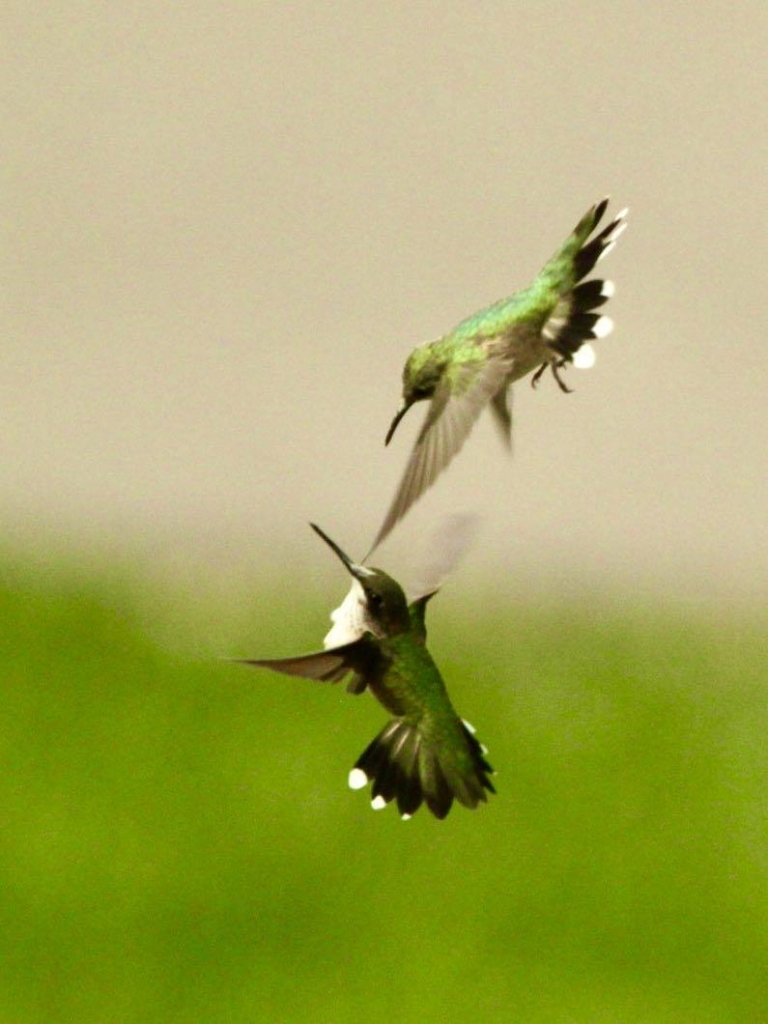 For Hummers: Hummingbirds must eat once every 10 to 15 minutes and visit between 1,000 and 2,000 flowers per day to sustain their supercharged metabolisms. Feeders stocked with sugar water provide needed carbohydrates, attract hummingbirds, and once they find a feeder they like, they visit frequently. Feeders require frequent cleaning and filling to keep the birds coming. If neglected, feeders can pose a health threat to the birds.
For Hummers: Hummingbirds must eat once every 10 to 15 minutes and visit between 1,000 and 2,000 flowers per day to sustain their supercharged metabolisms. Feeders stocked with sugar water provide needed carbohydrates, attract hummingbirds, and once they find a feeder they like, they visit frequently. Feeders require frequent cleaning and filling to keep the birds coming. If neglected, feeders can pose a health threat to the birds.
Orioles will use these feeders as well.
To Prepare a sugar water solution: Mix one part white sugar with four parts water. Bring the mixture to a boil to sterilize it and dissolve all of the sugar. Store any unused mixture in a refrigerator. Clean feeders every two or three days under hot running tap water, scrubbing them with a bottlebrush to eliminate fungus. Do not use honey in feeders, as this can grow mold. Also avoid red food coloring—it is unnecessary. To keep ants out of the feeder I suggest using a feeder with a moat on top. The newer feeders include these. I have made successful moats using a cork and the top of. plastic water bottle….I like the homemade ones because water evaporation is less of an issue.
For Orioles: Lure orioles up close by offering halved oranges on spikes or grape jelly in special feeders or small bowls. These foods also can be attractive to hummingbirds.
Tying red or orange artificial flowers to your feeders can be a visual clue for the birds.
Providing Protein
As their eggs hatch, the birds need protein to feed their young. While pollen from flowers contains the protein they need, the bulk of their protein comes from the insects they eat.
Having mealworms available for the orioles provide the protein needed to help bring healthy fledglings to adulthood. These can be served either fresh (favored by birds) or dry.
For the hummingbirds, their protein will come mainly from small insects, insect eggs, insect larvae and spiders….not that easy for you to provide.
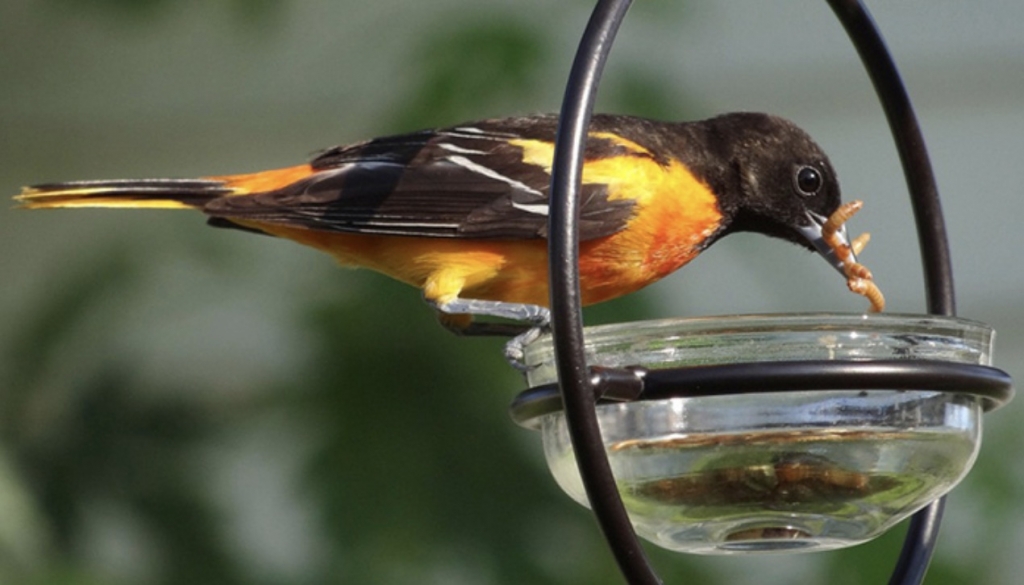
Selecting Plants
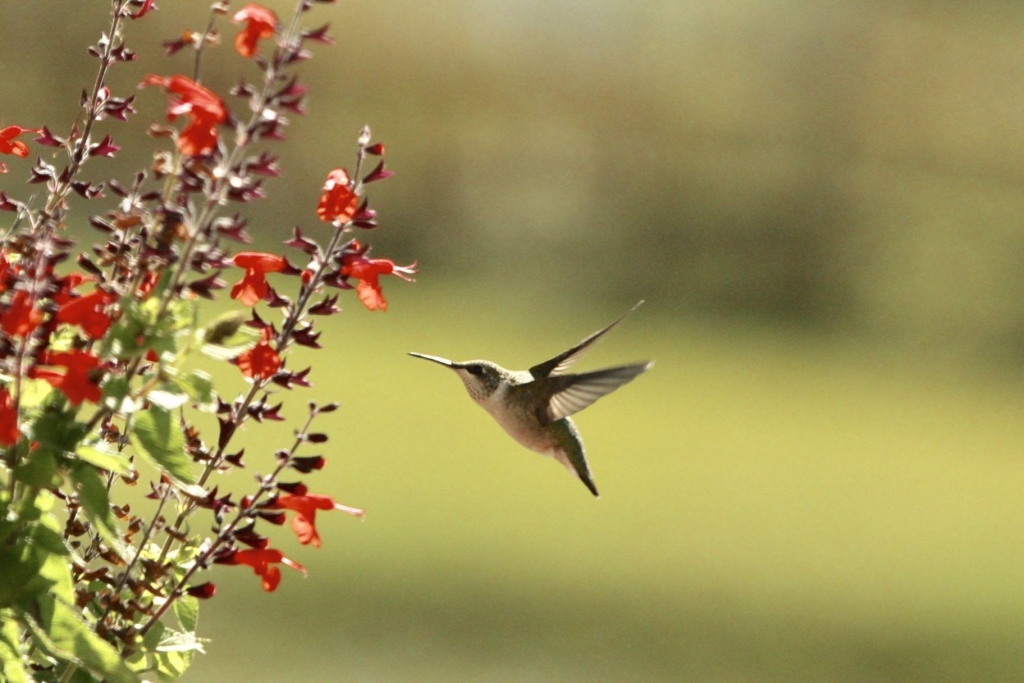
Hummingbirds: Choose plants with red, pink, or orange flowers, with a tubular shape.
Tubular flowers contain nectar at the bottom, which encourages these long-beaked birds to probe for their sweet meal. In general, flowers that rely on fragrance to attract insect pollinators are not good nectar sources, as most birds have a poor sense of smell. However, insects attracted to a plant can serve a source of protein for the hummoingbirds.
Plant patches of three or more individual plants of the same species.
This will provide larger quantities of nectar. Also, prune the tips of flowering plants to encourage bushing and more flowers.
Orioles: Planting fruit-bearing trees and shrubs such as serviceberries, mulberries, and elderberries will provide a natural food supply when the trees mature.
PERENNIAL PLANTS
Selecting perennial plants that bloom at different times provides nectar throughout the growing season. This is especially important in early spring when migrants first return, exhausted from their long travels. Native plants and nectar-eating birds have a long loving association.
This is a short list of plants native to Minnesota that provide nectar for the birds.
Spring
- Pasque Flower (Anemone patens) – (shade to part sun)
- Anemone (Anemone caroliniana) (sun to part shade)
- Candy Tuft (Ibreus) (prefer full sun)
- Shooting Star (Dodecatheon amethystinum) (shade)
- Virginia Bluebells (Mertensia virginica) (Shade to part sun)
Summer
- Bearded tongue (Penstemon spp.): perennial
- Bee balm (Monarda fistulosa, Monarda didyma): perennial with purple, pink, or red flowers
- Cardinal flower (Lobelia cardinalis): perennial; requires moist soil, partial shade
- Columbine (Aquilegia canadensis): perennial with orange-yellow flowers
- Coral bells (Heuchera sanguinea): compact perennial with small red flowers
- Jewelweeds (Impatiens spp.): annual
Fall
- Salivia
- Monarda
- Asclepias (milkweeds)
- Echinacea (coneflower)
- Hypericum (St. Johnswort): compact shrub – while not native, it has naturalized in the Midwest
- Catmint
A more complete listing of native flowers by season can be found at:
https://minnesotawildflowers.info/page/whats-blooming
ANNUAL PLANTS FOR CONTINUOUS BLOOM
Nice thing about annuals is that they remain in bloom for most of the summer and up until the first frost. Garden centers around the twin cities will have all of the newest varieties of flowers that attract orioles and hummingbirds.
A very short list is here:
- Salvia
- Lantana
- Butterfly Bush – Now that we are in a zone 5, you might give them a try.
- Mandevilla vine
- Petunias
- Firecracker plant
- Bidens
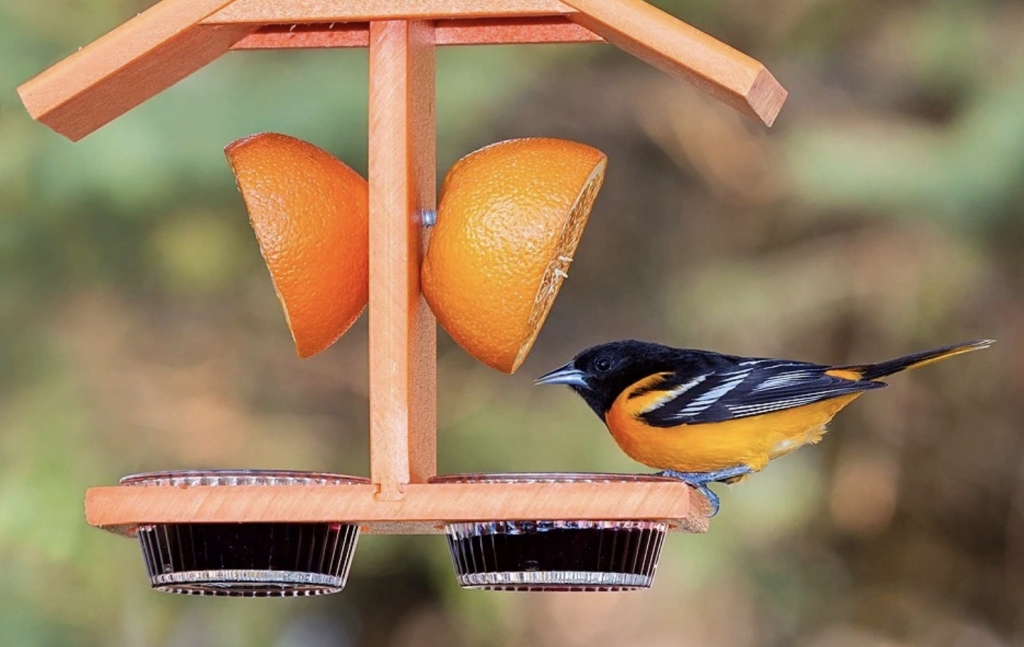
Other Things You Can Do for the Birds
Anticipate the arrival of the Orioles and Hummingbirds.
Have feeders available to the birds by mid-April….or early-May at the latest.
Provide a water feature.
Like most birds, hummingbirds frequently bathe in shallow water, and may preen or flit through the droplets generated by garden misters, drip systems, and small pump-fed waterfalls. Orioles also prefer shallow water— no more than two inches deep. Pebbles or small rocks can make the base less slippery and make the birdbath more inviting.
Provide trees and shrubs.
Hummingbirds and orioles use trees for perching and nesting. Large tree trunks may also provide a source of lichens, which many hummingbirds attach to the outsides of their nests with spider silk for camouflage. Humming- birds usually nest in the forks of small, stiff tree branches; orioles favor the drooping branches of maples, poplars, willows, and conifers. If your garden does not include trees or shrubs, a dead branch with small perching twigs makes a good substitute. Locate these perches near your garden or sugar water feeders.
Think vertically and in layers
Grow a cascade of nectar-rich plants by securing a trellis to your house and planting trumpet honeysuckle (Lonicera sempervirens) beneath it. Trees and garden sheds can also support sturdy trellises for trumpet vine (Campsis radicans). Layer herbaceous or lower-growing plants (see plant selections) in front of vines. Then add window boxes, tubs, or ceramic pots to create a terraced effect and provide growing places for a variety of nectar plants.
Spread out the resources.
Because they are combative, hummingbirds can use some space when possible. If you plant flower patches in several parts of your yard, or separate your feeder locations, this may give less aggressive hummingbirds the space they need.
Birds are fast, but so are cats.
Site any feeders, water features, or flowering plants away from, or well above, where sit-and-wait predators might pounce. Practice and advocate for treating cats like dogs— that is, providing safe and enriching places for pet felines to live indoors full time or supervised and contained outdoorsok…a leash is a hard call for a cat, but actually possible….
Provide snags for clear sight lines…especially for hummingbirds.
Hummingbirds are always on the alert — for food resources, for predators, and for the presence of other hummingbirds. Dead branches provide great lookouts. You can place a large dead branch or leave some dead branches in living trees to provide these lookout points. You may be surprised how quickly hummingbirds, flycatchers, and other birds adopt these “stick” perches.
AVOID PESTICIDES
There are times when pesticides are the only answer, but for the most garden pest issues, using an integrated pest management system is best…. only use pesticides as a last resort. Systemic herbicides can make their way into flower nectar. And both Orioles and Hummingbirds eat small insects and feed many of them to their young. Just as you wouldn’t want children or pets to ingest yard chemicals, the same should hold true for neighborhood wildlife. Let the birds be your natural insect control
About where they live….
Unlike some other popular backyard birds, hummingbirds and orioles do not nest in birdhouses. However, using the suggestions on this page will help you entice them to visit and build a happy home in your yard.
Enjoy Spring!
*Photographer for all photos of the hummingbirds is kathy Kessler.
November 2023 – Trends in Garden Design and Horticulture for 2024
Our gardens are all put to bed and the leaves have been raked (or not). Now is a great time to think about what the new trends are in garden design and horticulture. I ama going to explore things I founds in both the US and the UK …seems like the UK has been doing this longer than we have…. they must have their fingers on the pulse 🙂
Here are some trends that I found in my search
Mix indoors and outdoors
We are all used to bringing nature inside but what about putting and interior space outside. With people typically spending a lot of time indoors, gardeners have realized that the lines between indoors and outdoors are blurring. This expands the living space. Treating your entire property as your home can create a strong sense of home and connection with the natural world.
Set up a “garden room” to expand your living space so you can relax in the fresh air. You can screen off areas with tall shrubs or hanging plants to create the sense of enclosure you have indoors. Provide adequate lighting with fairy lights, overhead lights, lanterns, or outdoor lamps. Make yourself comfortable. A lounge chair or hammock will make your space even more welcoming.
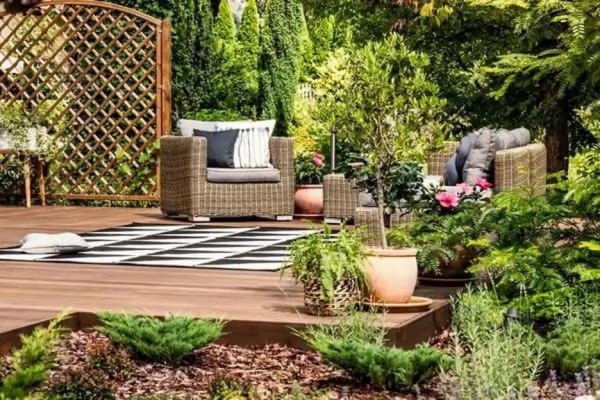

Separate garden room as an office or fitness room
A garden room is always a luxury. And…what if you could have a building separate from the house as your garden room? It could be set up as an office or gym to create some separation between home and work or workout life. It can also be used to create a retreat from the hustle and bustle of the day. It could be ultra contemporary, or the more conventional.
Bright colors in the garden
After the stress and hardships of the pandemic, we all need color in our lives. Planting plans are moving away from the tasteful pastels and muted colors that have been in vogue over the last decade, towards something much more bold. Bright colors are in fashion for spring and summer 2024. The planting is random and natural, like a stylized meadow intended more for pollinators than humans. Mixing brightly colored annuals with your pastel perennials really shows off both.

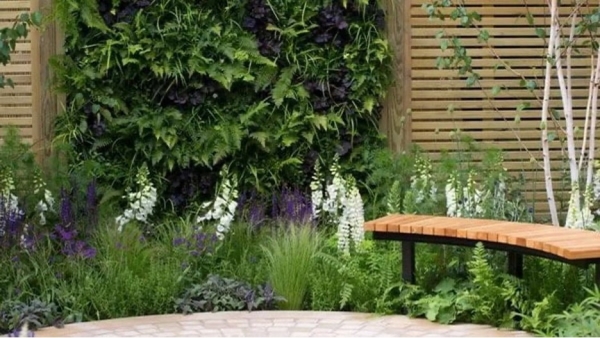
Living Walls
If you’ve always wondered how to create a vertical garden, this is the year to finally give it a try. Overgrown, living walls look much more natural than solid fences. They correspond to the current trends in the garden, where all the available space is used for plants, including the vertical space in your garden. In addition, the plant walls serve as a perfect privacy screen, so you can defend your privacy. And if you already have a garden wall or fence, this may be the right year to plant rampant roses or clematis to cover it.
Geometric shapes are popular
One of the biggest trends I observed online is the use of geometric shapes in paving, outdoor furniture and design. This is due to more natural shapes and materials being used in both the interior and exterior design. This trend is also being carried over to standard products such as planters. New patio blocks come in all shapes and all price ranges.
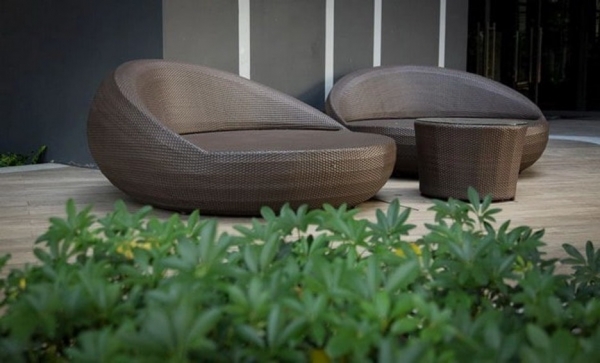

Multiple levels as one of the garden design trends
A garden that extends over more than one level can offer much more than a single level. Different levels help to zone areas. They provide a wonderful opportunity to play with materials. Dividing up the levels is also a good idea when it comes to planting….tall things to the back and shorter things in the front give you a cascading effect. You do not need to depend on your landscape’s grading, with built-in beds at different heights, planting can be designed to fill any line of sight.
October 2023 – Get Ready for a Flavorful Spring: Planting Garlic this Fall
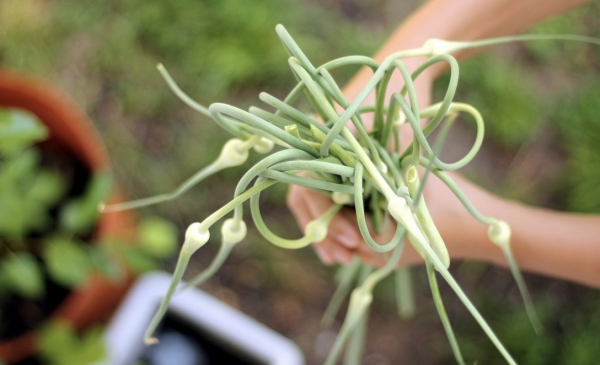 October is the month for enjoying the foliage, choosing the perfect pumpkin, and planting bulbs – including a kitchen staple garlic. Garlic is simple to grow, and October is the time to get started.
October is the month for enjoying the foliage, choosing the perfect pumpkin, and planting bulbs – including a kitchen staple garlic. Garlic is simple to grow, and October is the time to get started.
There are three common mistakes when trying to grow garlic in Minnesota:
- The wrong seed
- The wrong time
- The wrong place
Let’s focus on the positive as we look at ways to avoid these common mistakes.
The Right Seed:
- Think of garlic as a perennial….A perennial you plant each fall – You want to select the hardiest varieties. The University of Minnesota suggests you select a hard-neck variety. Two varieties recommended by most growers are Porcelain and Purple Stipe.
- Buy Local – Garlic purchased from MN growers will be the hardiest for Minnesota. You can find the local growers at this site:
Upper Midwest Garlic Directory: http://saf-mn.org/garlic-directory/
Garlic bulbs sold by local growers are generally healthy and disease free. One of the diseases that can effect garlic is Aster Yellows….arggg…..I know….. - Size Matters – A larger bulb will have larger cloves. The bigger the clove, the bigger the store of energy.
The Right Time
- Now is the right time. You plant garlic in the fall and in Minnesota from now till the ground freezes is perfect.
The Right Place
- Garlic needs at least 6 hours of direct sunlight per day.
- It likes a rich soil. Prepare your soil by adding organic matter.…the more the better.
- To plant, separate the cloves from the bulb, then set them pointed side up, flat side down about 3 inches deep and 8 inches apart.
- Add a mulch over the planted seeds to help retain moisture and help with weed control.
Leaves emerge and greet you in early spring, followed by scapes (flower stalks) in June – you can eat the stalks, too! Garlic is ready to harvest in early-mid-July. This is a great garden idea for the foodie/cook. Grow and enjoy your own garlic! How awesome!
Here are more links for more information about growing garlic in Minnesota.
- University of Minnesota garlic growing information:
https://extension.umn.edu/vegetables/growing-garlic#choosing-garlic-varieties-867460 - Information regarding the top varieties of garlic for Minnesota
https://sfa-mn.org/resources/seed-garlic-selection-assistance-chart/ - Where to find garlic sellers in Minnesota and Wisconsin:
https://sfa-mn.org/garlic-directory/
September 2023 – Garden Curiosity Unleashed: Discover with These Apps
This month I would like to offer up three free (and ad-free) apps and one subscription for you to investigate.
- iPhone – Your phone uses Siri to offer up suggestions and images to help identify plants and insects.
- PlantNet – Can identify plants using leaves, flowers, or fruit
- iNaturalist – My Go To – Along with identifying plants, this app makes it easy to share and confirm your findings with other observers, including both amateur and professional naturalists.
The one paid subscription I suggest is
- PictureThis @ $29/year
August 2023 – From Harvest to Hues
August in Minnesota is in full swing. It is a month of light winds and cooler nights.
Watch for these August treats:
- Monarchs flocking to lush flowers of pollinator plants, ready to produce the Minnesota offspring that will make their way to Mexico.
- Waves of sunflowers and wild cucumber vines cresting over the tops of trees flourish along roadsides.
- Partake in the garden’s bounty: tomatoes, broccoli, cabbage, cauliflower, sweet corn, beets, carrots, green peppers and zucchini. Gardeners are harvesting and if you are not one of those gardeners, you can find all the fresh produce at the Farmer’s Market.
- Arboretum spectacular: the bloom of the prairie along three-mile drive, apples beginning to ripen, glass pumpkins, and the display of annuals peaking.
It is perfect to take time to smell the roses and absorb all that Nature has to offer us.
July 2023 – The Enchanting Dance of Self-Seeding Plants
Self-seeding annuals and perennials, nature’s ingenious gift to the garden, bring forth a delightful tapestry of colors and textures year after year. These self-sustaining plants possess a unique ability to disperse their seeds and propagate themselves, ensuring a bountiful display without the need for constant human intervention. As their blossoms fade and transform into seed pods, the next generation quietly takes root, perpetuating the cycle of life and beauty. This natural process not only saves time and effort for gardeners but also brings a sense of wonder and harmony to the landscape. By attracting pollinators and supporting biodiversity, these self-reliant botanical wonders become ambassadors for ecological balance.
Self-Seeding Perennials:
- Purple Coneflower (Echinacea purpurea): This native perennial produces beautiful purple flowers and attracts pollinators. It self-seeds readily in full sun to partial shade and well-drained soil.
- Bee Balm (Monarda didyma): Bee Balm features vibrant red, pink, or purple flowers that attract butterflies and hummingbirds. It thrives in full sun to partial shade and moist soil.
- Black-Eyed Susan (Rudbeckia hirta): With its classic yellow flowers and dark centers, this perennial prefers full sun and tolerates a variety of soil conditions.
- Brown-Eyed Susan (Rudbeckia triloba): While flowers are smaller than the black-eyed Susan each stem is profuse with yellow flowers. Prefers full sun and moderate moisture and is drought tolerant.
- Columbine (Aquilegia spp.): Columbines offer a range of flower colors and attract hummingbirds. They grow well in light shade to partial sun and prefer well-drained soil.
- Blanket Flower (Gaillardia spp.): Blanket Flower displays vibrant red and yellow flowers and is tolerant of drought and poor soil conditions. It prefers full sun.
- Siberian Bugloss (Brunnera macrophylla): An adorable bright blue beauty that finds its way into little empty spaces. Prefers moist shady areas. Grows 12-18” tall.
- Feverfew (Tanacetum parthenium): This plant in the chrysanthemum family been used medicinally for many years. It is commonly known as Feverfew, and it is a tall plant, 36 inches in height, with deeply-cut green leaves and white daisy-like flowers with yellow centers.
- Balloon flowers (Platycodon grandiflorus): Available in white, pink and blue these flowers prefer full sun to part shade, moderate moisture and rich well-.drained soil.
Self-Seeding Annuals:
- Cosmos (Cosmos bipinnatus): Cosmos produce an abundance of colorful flowers in shades of pink, white, and red. They self-seed easily in full sun and well-drained soil.
- California Poppy (Eschscholzia californica): California Poppies have bright orange or yellow flowers that add a cheerful touch to the garden. They thrive in full sun and well-drained soil.
- Cornflower (Centaurea cyanus): Cornflowers produce striking blue flowers and can also be found in other colors like pink and white. They prefer full sun and well-drained soil.
- Sweet Alyssum (Lobularia maritima): Sweet Alyssum features small, fragrant flowers in shades of white, pink, or purple. It self-seeds easily in full sun to partial shade and well-drained soil.
General tips for success with self-seeding plants:
- Allow the plants to flower and go to seed.
- Sow seeds in a prepared soil (weeds removed and added soil improvements) or let them self-select a location.
- Be patient, as self-seeding plants often take time to establish and spread.
- Avoid use of herbicides and preemergents (Preen) as they hinder the natural self-seeding process.
- Regularly monitor the seedlings and thin them if needed, allowing enough space for healthy growth.
- Water the plants regularly, especially during dry periods, this promotes germination and growth.
- Mulch the area around the plants to protect the soil and retain moisture.
Two things to remember:
Be patient, as self-seeding plants often take time to establish and spread.
Self-seeding plants can be prolific and spread beyond their desired area. If you want to control their spread, remove excess seedlings or consider confining them to specific beds or areas of your garden.
June 2023 – Sowing Magic: Unleashing the Power of Growing Herbs
As June arrives in Minnesota, we experience warmer temperatures and longer daylight hours, making it the ideal time for planting herbs. And what is better than growing your own fresh herbs to use in your cooking. You can create an herb garden with both annuals and perennials. Some herbs appropriate for our Minnesota climate are: chives, thyme, parsley, oregano, sage, and mint.
Perennial Herbs:
- Chives (Allium schoenoprasum): Hardy and resilient, chives are a great addition to gardens in Minnesota.
- Thyme (Thymus spp.): There are many thyme varieties to choose from, including common thyme and creeping thyme, which are well-suited to Minnesota’s climate.
- Sage (Salvia officinalis): Sage is a hardy perennial herb that can withstand Minnesota’s cold winters.
- Oregano (Origanum spp.): Greek oregano and common oregano are both suitable for growing in Minnesota.
- Mint (Mentha spp.): While mint can be invasive, growing it in containers can help control its spread. The container can be buried up to its rim to keep it contained in a garden. Peppermint and spearmint are popular varieties.
- Lavendar (Lavendula augustifolia): Two varieties ‘Munstead’ and ‘Hidcote’ are the two hardiest cultivars. Both are usually rated as USDA Zone 5 hardy, which means they will need a protected spot in most of our Minnesota gardens
Annual Herbs:
- Basil (Ocimum basilicum): Basil thrives in warm weather, so it’s best to grow it as an annual in Minnesota. There are various types of basil available, including sweet basil and Thai basil.
- Cilantro (Coriandrum sativum): Cilantro prefers cooler temperatures, making it an excellent choice for Minnesota’s spring and fall seasons.
- Dill (Anethum graveolens): Dill is an annual herb that grows well in Minnesota and is commonly used in pickling and cooking.
- Parsley (Petroselinum crispum): Both curly parsley and flat-leaf (Italian) parsley are suitable for growing in Minnesota.
- Annual varieties of thyme and savory: Although thyme and savory are typically perennial, there are some annual varieties available that can be grown as one-season herbs in Minnesota.
Hints for a Healthy Herb Garden
- Choose the right location: Find a sunny spot in your garden with well-drained soil. Most herbs prefer at least six hours of direct sunlight per day, so select a location that receives adequate sunlight. Ensure that the soil drains well, as herbs generally do not like soggy conditions.
- Prepare the soil: Before planting, prepare the soil by loosening it and adding organic matter like compost. This helps improve drainage and provides nutrients to the plants.
- Planting and spacing: Follow the planting instructions for each herb, as spacing requirements may vary. Generally, space plants according to their mature size to ensure they have adequate room for growth and air circulation.
- Mulch: Apply a layer of organic mulch, such as straw or wood chips, around the base of the plants. Mulch helps retain soil moisture, suppresses weeds, and moderates soil temperature.
- Watering: Proper watering is crucial for establishing healthy plants. Water deeply and less frequently, allowing the soil to dry out slightly between waterings. Avoid overwatering, as this can lead to root rot and other issues.
- Fertilization: Herbs generally do not require heavy fertilization. However, a light application of balanced organic fertilizer in spring can help promote growth. Follow the product instructions for application rates.
Recipes for Great Summer Beverages
Mint Lemonade:
Ingredients:
- 4 cups water
- 1 cup freshly squeezed lemon juice
- 1/2 cup granulated sugar
- 1/4 cup fresh mint leaves, torn
- Ice cubes
Instructions:
- In a saucepan, combine water and sugar. Heat over medium heat until the sugar dissolves completely.
- Remove from heat and add the torn mint leaves. Let the mixture steep for about 10 minutes.
- Strain the mint-infused syrup into a pitcher.
- Add lemon juice to the pitcher and stir well.
- Fill glasses with ice cubes and pour the mint lemonade over the ice. Garnish with fresh mint leaves, if desired. Serve chilled.
Note: You can create variations of this recipe by adding lemon verbena in place of the lemon juice. You can also reduce the sugar…or eliminate it completely…for a less sweet drink.
Rosemary and Grapefruit Mocktail:
Ingredients:
- 1 cup grapefruit juice
- 1/2 cup sparkling water
- 1 tablespoon fresh rosemary leaves
- 1 tablespoon honey
- Ice cubes
- Grapefruit slices for garnish
Instructions:
- In a glass, muddle the fresh rosemary leaves with honey until well combined.
- Add grapefruit juice to the glass and stir until the honey is fully dissolved.
- Fill the glass with ice cubes and top it off with sparkling water.
- Garnish with grapefruit slices and a sprig of fresh rosemary. Serve chilled.
Basil Strawberry Lemonade:
Ingredients:
- 4 cups water
- 1 cup freshly squeezed lemon juice
- 1/2 cup granulated sugar
- 1 cup fresh strawberries, hulled and sliced
- 1/4 cup fresh basil leaves, torn
- Ice cubes
Instructions:
- In a saucepan, combine water and sugar. Heat over medium heat until the sugar dissolves completely.
- Remove from heat and add the torn basil leaves. Let the mixture steep for about 10 minutes.
- Strain the basil-infused syrup into a pitcher.
- Add lemon juice and sliced strawberries to the pitcher and stir well.
- Fill glasses with ice cubes and pour the basil strawberry lemonade over the ice. Garnish with fresh basil leaves or strawberry slices, if desired. Serve chilled.
Enjoy experimenting with these herbal beverages!
April 2023 – Spring into Summer – Saving Peonies
Peonies….what great cut flowers. Their blooms are so large they make a big impact with only a few blossoms. What if you could make the season last longer? Would you do it? Well, here is an idea that prolongs peonies for later….much later…. bouquets.
Commercial cut flower operations pick their peony buds and can successfully store them for up to three months. This practice allows them to extend the marketing season as the actual peony bloom season is pretty short. Our home refrigerators are not as cold as those used by the commercial growers, making our saving time a bit shorter….. My daughter was getting married in mid-July….and I wondered….”Can I save them for 6-8 weeks in the refrig?” I just had to try. AND it worked….it really worked.
Before you begin you need
- While you could use newspaper, the ink can rub off. I suggest a tablet of newsprint purchased from a craft store.
- Plastic bags. I found the bags from the Sunday newspaper were great. They are long and narrow.
- An empty crisper drawer in your refrigerator. This might be the hardest thing of all! If you have a second refrigerator that could help matters.
The preparation/storage process
- In late May, cut the peonies when they are like large, soft marshmallows…. Not knowing just how well they would save I cut them at various stages of open….hoping to have a few that worked well. Single pettaled varieties should be cut when the buds are tighter than the multi pettaled double flowers.
- Because ants may already be crawling on the buds, I suggest you rinse buds off and pat dry with paper towels. The last thing you want is ants marching inside the refrig.
- Remove almost all of the leaves as they tend to produce too much moisture when bagged resulting in the buds rotting.
- Wrap buds in newsprint. The newsprint keeps the buds from touching the plastic….this is to avoid moisture build up and mold development. I labeled the outside of each package with the number of stems .and color of the blooms
- Cut a small hole in the bottom of a plastic bag that is large enough for you to insert your hand
- Lacing you hand through the hole, place wrapped buds inside the a plastic bag. (You could use two-gallon zip-lock bags, but I find the newspaper plastics a bit longer so I can keep the stems longer.) Close the bag tightly to keep plants from drying out.
- The packaged peony buds are stored dry, and placed flat on the shelves of the refrigerator. You will be surprised how many will fit into one drawer.
To use the flowers
You need to plan ahead….Once removed from the refrigerator it will take from 8 to 24 hours for buds to open. When the buds are first removed from the refrig, the blossoms may look wilted. DO NOT PANIC. The ends of each stem may look dry. Re-cut the stems to expose clean fresh tissue and place upright in a bucket or vase containing room-temperature water. Cold water slows the opening process.
Other things you may want to know
- For best results storing flowers for no more than 3-4 weeks is best. Once the stored flowers are arranged, they should last 5-10 days. I saved mine in the refrigerator for 8 weeks. While they looked good for our daughter’s wedding, they lasted only 2 days. We used the bouquets for both the rehearsal dinner and the wedding reception.
- If you cut your buds when they are too tight, they will not open…if you cut them when they are too open the petals will fall quickly. This is a trial and error process. Your success will improve with experience. I suggest you keep a journal (and maybe even take pictures). This will help you track what worked and what did not work.
(vlog about peonies from UMN Morris: https://youtu.be/R9C48CGhkP4)
November 2022 – When Is a Lily Not a Lily?
There are eight beautiful, cold-hardy types of perennial lilies for your summer garden: Asiatic, Oriental, Trumpet, Orienpet (cross between Oriental and Trumpet), LA hybrid (cross between Asiatic and Longifolium/”Easter lily”), Turk’s Cap, Martagon (shade), and Canada Lily (native) All of these lilies are in the genus lilium (family Liliaceae). They are grown from BULBS.
While all true lilies are grown from bulbs, not all lily-like flowers grown from bulbs are true lilies.
So…when is a “lily” not actually a lily? Here are some examples:
- Calla Lily – Zantedeschia/Araceae family – tender bulb
- Rain Lily – Zephyranthes/Amaryllis family – tender bulb
- Voodoo lily – Amorphophallus – tender bulb
- Day lily – Hemerocallis – perennial tuber
- Canna Lily – – Cannaceae – tender rhizome
- Surprise Lily – Lycoris/Amaryllis family- perennial bulb
- Water lily – Nymphaea/Nymphaeaceae – tender bulb
- Clive Lily – Clivia/Amaryllis family – tender rhizome
- Blackberry Lily – Belamcanda/Iris family – perennial rhizome
- Peace lily – Spathiphyllum – tender rhizome
- Lily of the Valley – Convallaria – perennial rhizome
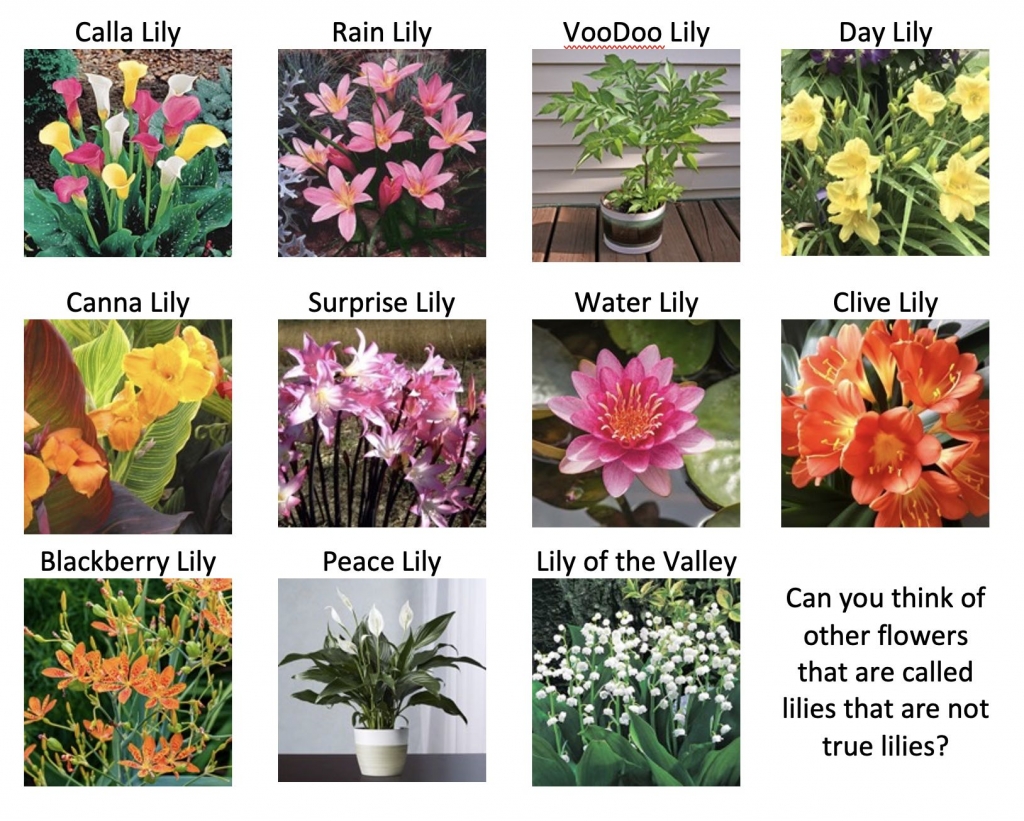
True lilies native to MN: Dwarf Trout lily (Lily family – Erythronium), Wood lily (Lilium philadelphicum), Tiger lily (Lilium lancifolium), Michigan lily (Lilium michiganense, likes wet feet)
For a more comprehensive list of plants called lily that are not true lilies: https://en.wikipedia.org/wiki/List_of_plants_known_as_lily
What is the difference between tubers, bulbs, corms and rhizome?
Even those of us that have been gardening since we were wee ones, often use the words tuber, bulb corm and rhizomes in conversaiton as if they all meant the same thing. While they all seem quite similar, there are definite differences.
- Bulb – has layers of modified leaves growing underground (layers like you see in an onion) – tulips, daffodils, allium, hyacinth, amaryllis, garlic, and of course lilies.
- Corm – similar in look to a bulb, but solid inside -crocus, gladiola, some iris – When it is cut open there are no layers, it is solid flesh.
- Rhizome – grow horizontally, forming roots on the bottom of an underground stem and sends shoots upwards– dahlias, canna lily, lily of the valley, iris (some iris are also grow from corms)
- Tuber – Two kinds of tuber
- True Tuber (modified stems that grow underground)– potato, tuberous begonia, caladium – can be cut up and plant grows form any eye
- Root tuber (swollen roots) – dahlia, daylilies, peonies, sweet potatoes – has one end that has root and one that grows in a more horizontal fashion.
October 2022 – Greener Garden Practices
It is hard to believe it is already October and time begin preparing your yard and gardens for winter.
Here are a few hints for ways to prepare your yard and garden:
- This is a great time to de-thatch your lawn, spread some new seed, add fertilizer and replace sod where needed.
- Your yard and garden need watering through these last dry weeks. Be sure to keep both hydrated till the first freeze.
- Remove and dispose of annuals. They can carry pests and bacteria into next season if left over the winter.
- Leave the seed heads of your perennials, especially the natives, standing for the birds and for winter interest.
- If you cut your perennials down, leave stems 12-18” tall. This provides nesting spots for wild bees and catches the snow adding a layer of protection for the perennials.
- You needn’t bag all of your leaves. Blow them into the garden to add a layer of mulch that provides nutrients and warmth for the coming winter.
University of Minnesota Extension Resources
Fall Lawn Care – https://extension.umn.edu/yard-and-garden-news/fall-lawn-care
Weed control in Minnesota – Consider your tolerance for weeds in your turf. Perfect lawns are resource gluts. However if you think some weed control is necessary, now is the time for adding control for broad-leaf weeds like: dandelions, creeping charlie, wild violets and black medic. The University of Minnesota Extension offers help with identifying broad-leaf weeds as well as ways to control them – https://apps.extension.umn.edu/garden/diagnose/weed/idlist.html
Year-round Lawn Care Calendar https://extension.umn.edu/planting-and-growing-guides/lawn-care-calendar

